THE DECISIVE MOMENT






Retired from the UN refugee agency after a career as a workaholic, frequently living in a tent on remote borders in troubled regions. Have now achieved my work-life balance by getting a life after work. What do I like? Photography, photographers, being at home, travelling and people who respect human rights. What do I dislike? The fact that I am becoming a grumpy old woman and actually enjoying it.
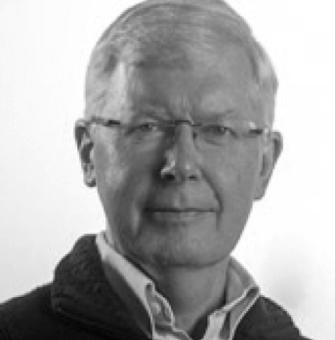
I have been interested in photography since my late teens however family and work commitments took then priority and I’ve really only got back to it over the past 5 years since retiring from a life in the City. I joined the RPS, and the Documentary group, about 4 years ago and was awarded my LRPS in 2013. I am also a member of Woking Photographic Society and the Street Photography London collective. My particular interest is ‘street photography’, something that I’m able to combine with my part time work for a charity in London.
DM Editorial team:
Editor: Jhy Turley, ARPS
Sub Editor: Belinda Bamford
Sub Editor: Graham Wilson

I have been interested in photography since childhood and have been actively taking and making images for many years with a few lapses caused by work and the onset of family responsibilities. I retired in 2005 after a career in the IT industry. I have since combined sport spectating with photography – I spend most Saturday afternoons in winter kneeling in the mud, camera in hand, at my local rugby club. I feel at home in towns and cities and spend time in London where there is always something happening that seems to me to be worth recording.
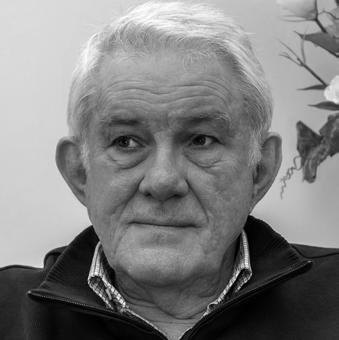
I joined the RPS in 2013 and was awarded my LRPS in 2014. My main interest is in documentary and street photography and I have been a member of the Documentary Group since joining the Society. I was instrumental in forming a Documentary Group in the Northern Region in 2015. My other involvement with photography is as a trustee and board member of the arts organisation, Multistory, in the West Midlands.
And the rest of the team:
Facebook: Jonathon Taylor
Flickr: Chris Barbara, ARPS
Webmaster: David Barnes, LRPS
Forum Moderator: Alan Graham
Another wonderful edition of Decisive Moment. Each time I see a new edition I can’t help feeling very proud of how well we are now doing, both as a Group and with Decisive Moment. Many thanks to Jhy, his team and all our volunteers – I think we’re a really strong team, giving our members a lot for their £15. Good news, we won’t be proposing an increase at the AGM on 2 April.
We’ve had a lot going on in the last three months and there’s more happening in the coming months.
• DPoTY 2017 is ready to launch (with a team of five volunteers managing it)
• The completion of the first of our new Bi-Monthly single image competitions
• A new Documentary sub-group in the South East – for members in the RPS Southern and South Eastern Regions. To be coordinated by Janey Devine FRPS
• An Ali Baskerville documentary story telling workshop in Chichester – a totally revised presentation. I think it was the best Ali workshop yet. It was sold out and we’re planning to do another couple during the rest of the year
• A meeting in Bath for Western Region members will take place in April, to discuss setting up a documentary sub-group, jointly supported by ourselves and the Western Region Committee
• A joint WWI project ‘Then & Now’ with Exeter University, on which we will collaborate with all RPS members who are interested in the subject.
There’s more in the pipeline. A number of the RPS SIGs are discussing how to work more closely together, to share information on events, so that members of Special Interest Groups (SIGs) have easier access to information on what other SIGs are doing and are able to join in. We’ll be doing a joint event in Bristol later in the year with the Travel Group.
Our AGM will be held on 2 April. It will be held again this year at the Canvas Café in Shoreditch. Partly because it’s such a wonderful area to wander around with a camera and partly because we like it. At the inaugural meeting of the DG SE sub-group I saw an AV presentation by Graham Sergeant FRPS, which had me in tears – it’s one of the most moving, and brilliant, documentary stories I’ve seen. Graham will bring it along to the AGM as I think many members will be interested to see it. I do hope as many of you as possible will come along to have your say and meet other members. If you can’t come then please do vote for the Committee and pass your proxy vote to David Barnes (docsecretary@rps.org). Can I remind you that I will stand again this year, but it is my last year as Chair. So, we need a volunteer who is prepared to put her/himself forward, prepared to be co-opted onto the Committee this year and to stand as Chair in 2018. As I said earlier we have a great team of volunteers and whoever takes over will have lots of support to take the DG forward.
Let me repeat again if you’re interested in having a Documentary sub-group in your region, and are willing to help out with it, then let me know. If you want to set up an event or a photowalk let me know and we’ll provide you with the support necessary to make it happen.
I’ve said a lot this month about our volunteers – and how proud I am of our joint achievements. Without these volunteers, who give a lot of their time to the Group, we wouldn’t be able to offer you the variety of documentary activities that we do.
Best wishes,
Mo Connelly
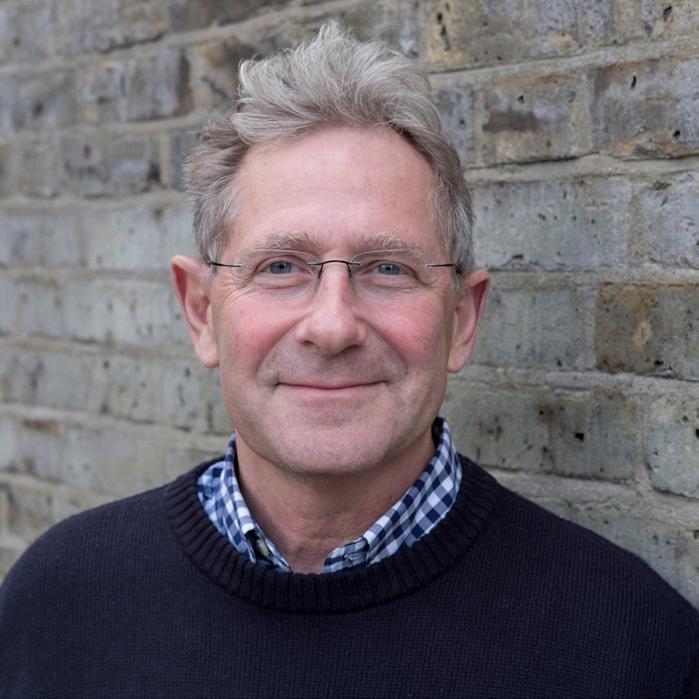
Stuart Franklin is an award winning photographer. One of the UK’s most experienced photojournalists, author of nine books, teacher, Vice President and former President of Magnum and has recently chaired the jury of the World Press Photographer awards.
MC: How did your interest in photography begin and is there a photographer you admire over others?
SF: I’m from London and when I was 16 or 17 I went travelling and walking around in the port towns of Central America. I was curious and fascinated about what was around the next corner. I travelled a lot when I was young and my interest came from my own curiosity in the world around me. I had a second hand Yashica twin lens reflex camera and started capturing light and daily life. After hitch hiking across the States I ran out of money in Vancouver and found a job as a printer, and continued my interest in photography.
Henri Cartier-Bresson is my role model, with an approach to photography that is curious, gentle, surreal and beautiful.
MC: How did you become a professional photographer?
SF: When I came back to the UK, I started a course at Oxford Poly in Art and Design. I chose photography over painting and fine art. I had to look after myself and photography was the only way I could see myself earning a living. Unlike today, there was a greater chance of earning your living by being visually creative. I went on to Farnham College and was fortunate that Lance Brown understood visual story telling and was keen for students to find their voice through photojournalism.
I started with a portfolio of portraits of famous people which gave me the experience of dealing with people, and gave me something to present to editors and magazines.
I turned professional, freelance, working mainly with the Sunday Times, but also other places. During my first year, I concentrated on portrait and environmental photography. Photographing during the day and spending my nights in the darkroom. I’d deliver the prints the next morning and get another job in the afternoon. I spent a lot of time learning my craft.
In the late 70s the Sunday Times was a fun, lively, paper and the older journalists took me under their wing. There was a lot of camaraderie and support. I never knew what was going to come up next, and it was always interesting.
I also worked freelance for other publications including Accountancy Age, doing portraits, as well as Face and some rock magazines. My interest then were mainly portraits and I took my portfolio everywhere. I also worked for the Telegraph and Observer. Newspapers were all print in those days and you wouldn’t know what was in the paper till the next morning.
MC: You’ve talked of camaraderie and support but was there also a degree of competitiveness?
SF: I don’t recall it as competitive, more supportive, and I found the same at National Geographic where we spent whole evenings looking at each other’s work and discussing.
MC: Has that atmosphere changed now?
SF: It’s harder to find. Documentary photographers are more isolated and probably have less support. We discussed this last year at the World Photography Awards. There are fewer editors to support and advise, particularly for freelance photographers. Most photographers now are freelance and whilst you might get assignments there might be nothing for a while. So it’s hard to earn your living.
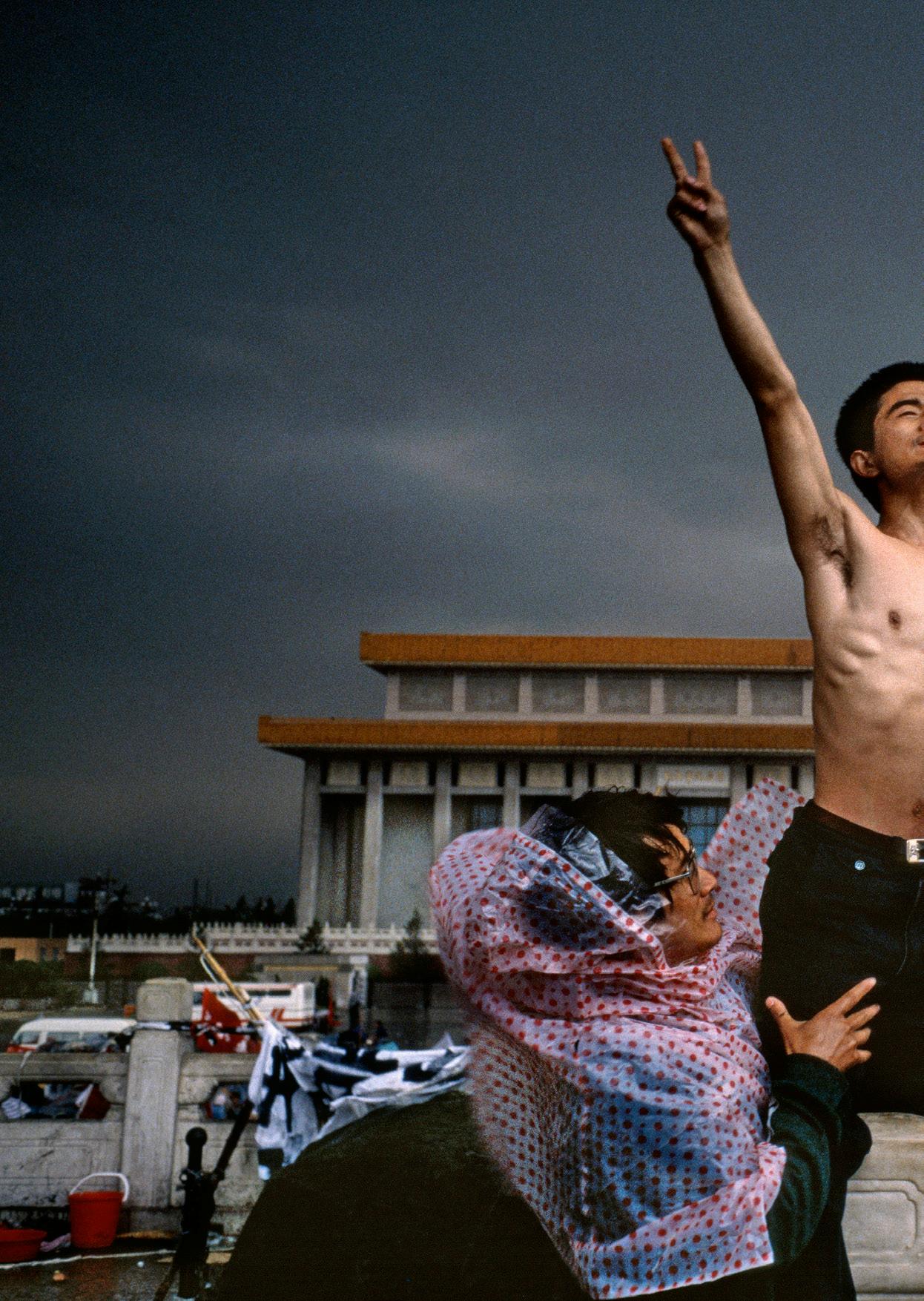
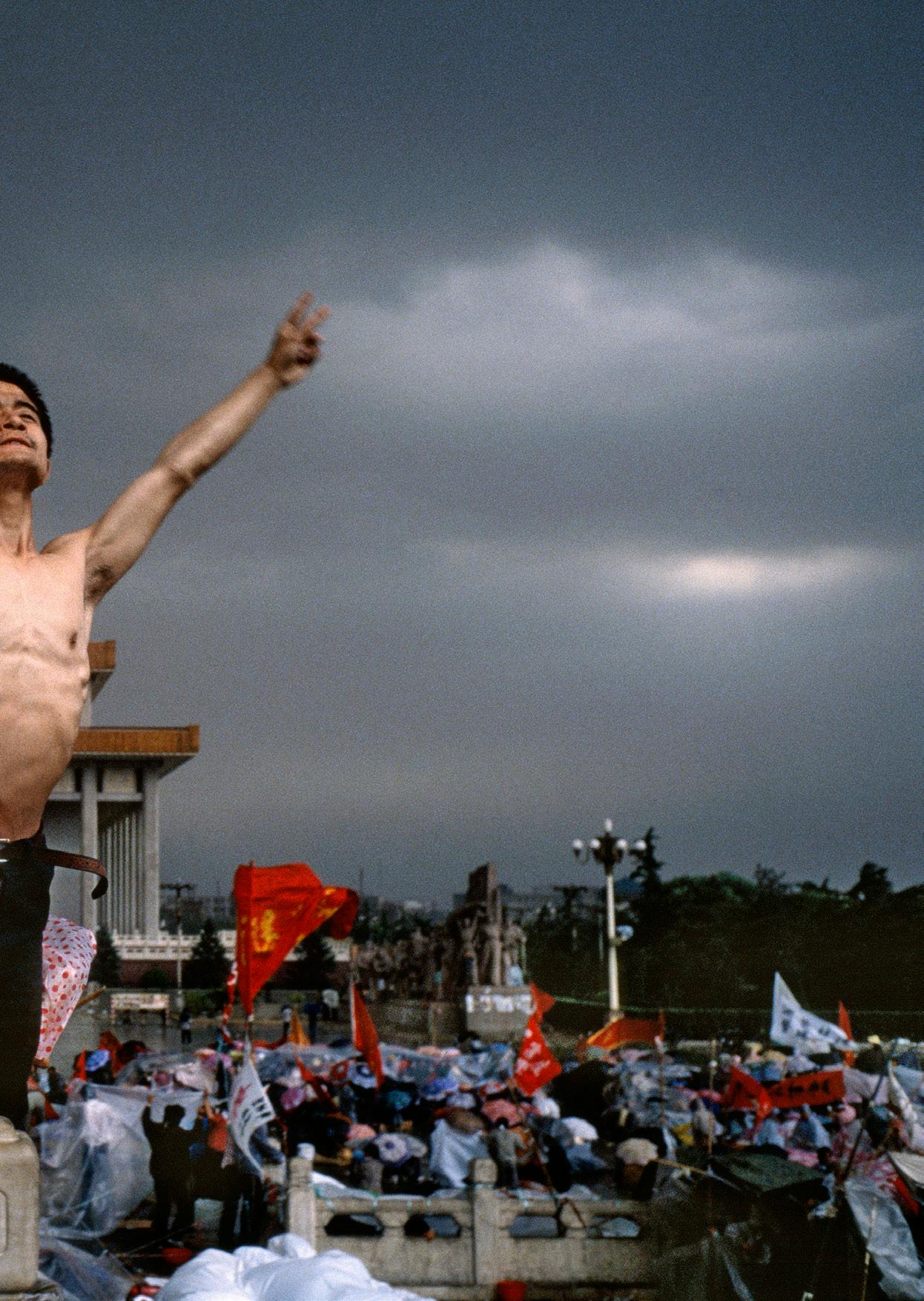
MC: How important is a picture editor to a photographer?
SF: Hugely. Like an editor, when you’re writing a book they help to share the workload as I realised with The Documentary Impulse. Having the support of a picture editor is of enormous value. Now they are few and far between and you’re left to get on with it, and when you submit you hear nothing.
In 1990, I moved from news to magazine feature photography and worked with National Geographic for 18 years. We were invited to edit our work with the illustrations editor, where we had a major say in why a particular image was important to the story. So the buck stopped with us. We were also flown back to work with the layout team on organising how the text fitted with the images.
MC: National Geographic must have been a satisfying job for a photographer?
SF: Yes, lots of support around you, lots of people who know what they’re doing and who have knowledge of the world. A bit like the BBC. Some of the assignments weren’t easy. Ultimately, I had to move on as it became formulaic and what they were looking for didn’t often fit into my own way of thinking. In the 2000s, I moved on to photobooks, and that helped me to develop my own narrative in a slightly different way.
MC: Apart from Henri Cartier-Bresson which other photographers do you admire?
SF: Loads for different reasons. Minor White, Edward Weston and Sergio Larrain. The first photobook I ever bought was Mary Ellen Mark’s passport. I like discovering new photographers some of the South African photographers and Munem Wasif from Bangladesh. My interest is huge. I love photography, and I love engaging with new work. It’s all different. The way work is put together and the way it communicates. Lise Safarti’s portraits are very different, as are Mapplethorpe’s. Everyone has something different to bring to the table. I have a huge collection of photobooks and enjoy them all.
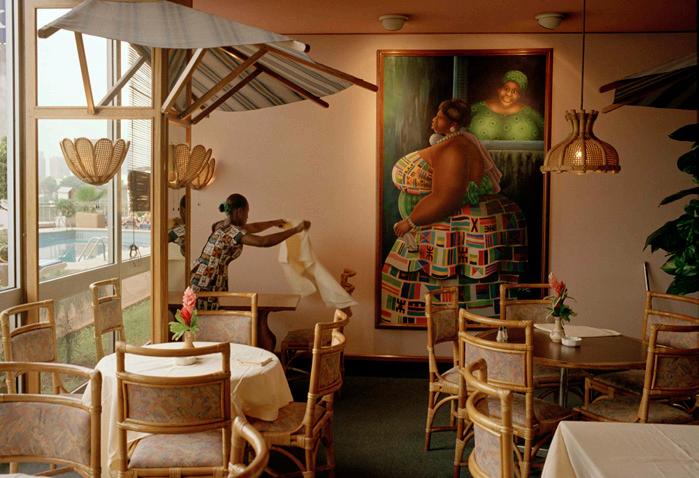

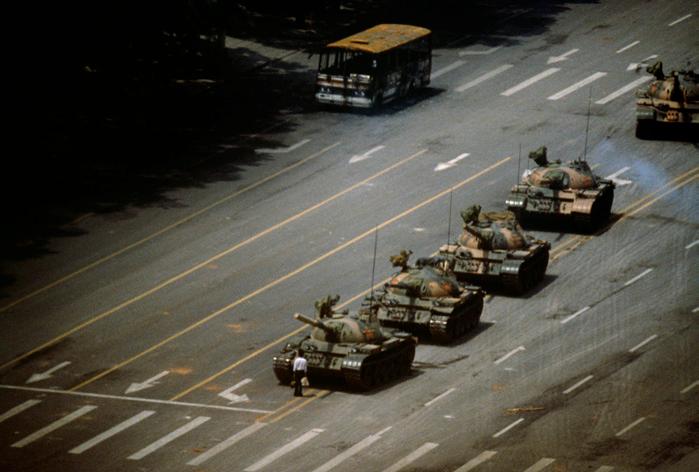


MC: As a photographer you’ve covered many types of stories. Do you have a preferred type?
SF: I quite like variety. Recently I photographed a French rap protest singer and it was terrific to hear her and understand her world. I’m also interested in landscape. All kinds of things. I like the fact that with an assignment you never quite know what’s coming up for you and it opens up a new idea, which opens up a whole new range of opportunities. I’m not very good at motivating myself, so I like the lottery of being given an assignment. I still enjoy portraits, particularly environmental portraits and I like the challenge of trying to capture someone during their day.
MC: You’ve worked a lot on the edge of war and danger zones so what type of photographer are you?
SF: I don’t consider myself a war photographer, in the same way I wouldn’t consider Roger Fenton a war photographer, as he has only spent two months of his entire life photographing war. I’d like to think that I’m a humanitarian photographer. I hope I get people to engage with my photographs and to be empathetic to the plight people are in. Whether it’s people suffering from cerebral palsy in Hungary or those suffering from psychological trauma after fleeing Syria, for example. It’s to get people to understand what others are going through.
I’ve always been keen on social justice. I teach in Norway where they care for people and don’t let them suffer. Now, I teach documentary more than I practice, but I’d like to practice more. Humanitarian photography, in general, is quite a political voice, and as most of the British press are on the right, you’re fighting a losing battle.
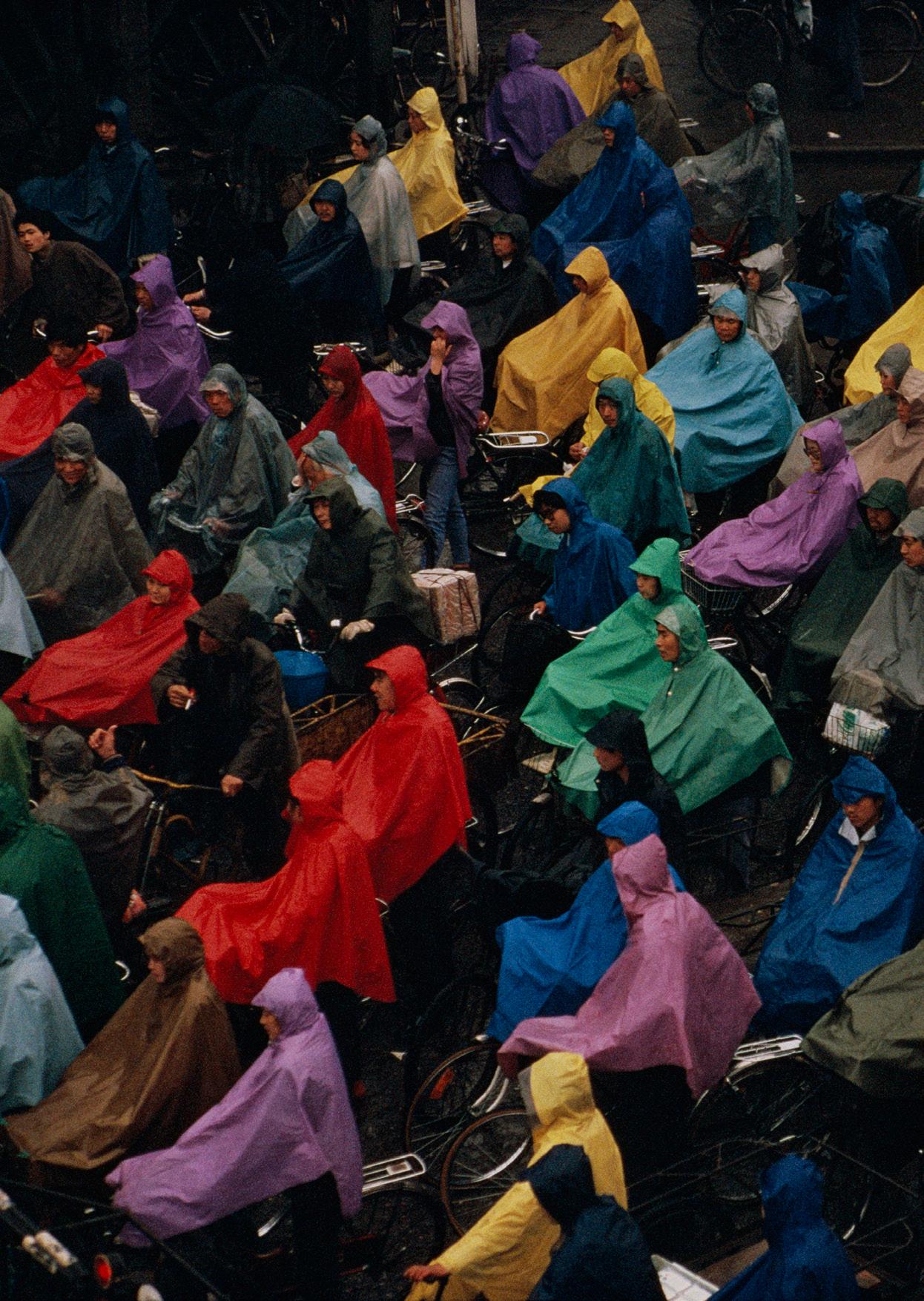
“I love photography, and I love engaging with new work. It’s all different.”
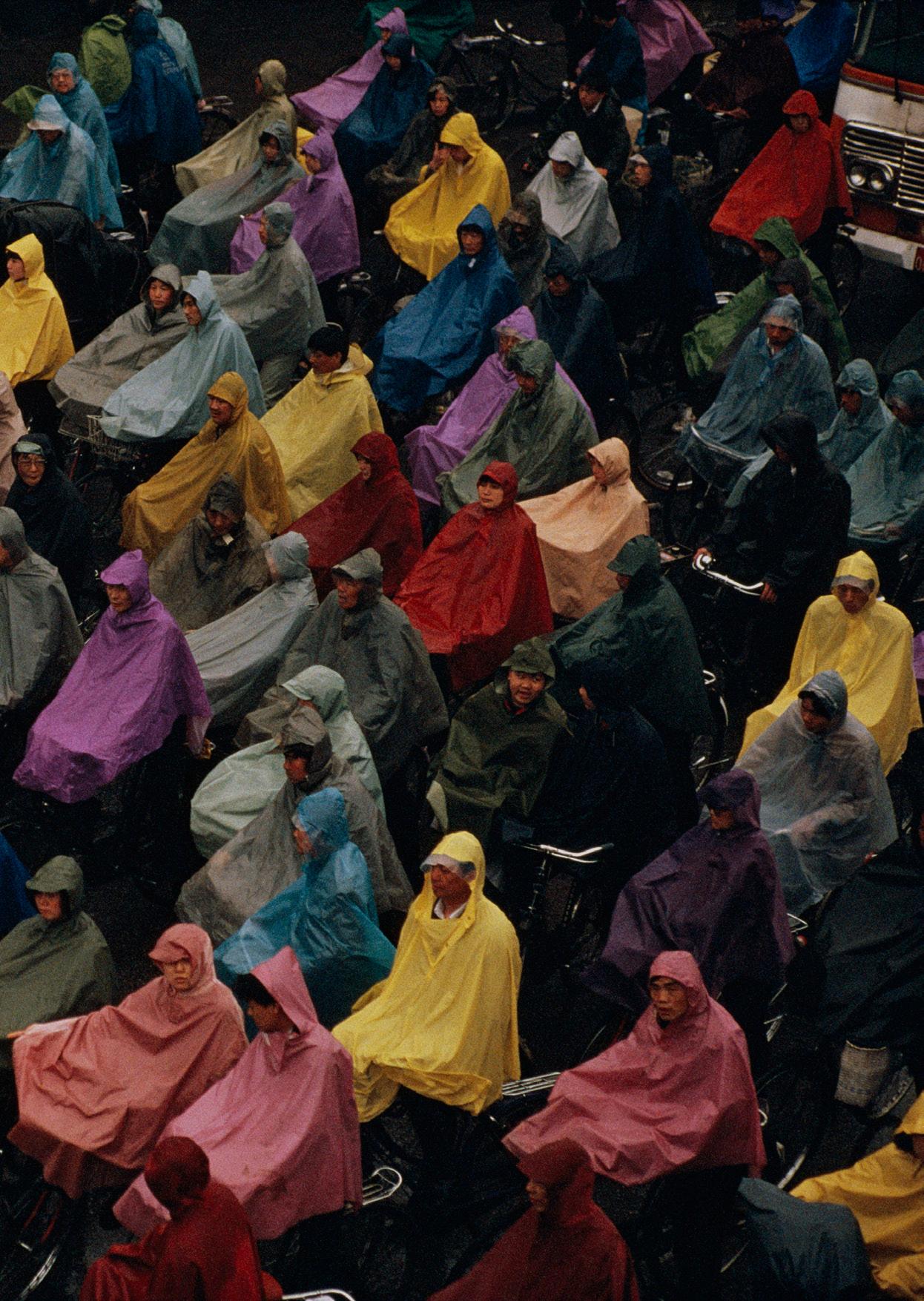
MC: How did you tackle the change from analogue to digital?
SF: I work in both. I still shoot film a lot even today. Most of my assignments in 2016 were on film. Digital is fine, if the conditions are fine, but the minute you have complications with the light, I’d much rather be using film. I prefer the way film reacts to light.
I use a printer in London for my black and white prints. In colour, I scan the negatives and use the computer.
MC: Would you like to return to any of the countries you’ve worked in and do follow up stories?
SF: I was keen to go back to Peru. Where I’ve worked a lot, and to look at the changes which have taken place in the countryside. For a long time, Peru was static in terms of rural development, and I went back last year to look at the changes to artisanal brick making.
MC: What is your most memorable image? Or more than one?
SF: I suppose the most memorable image is the man in front of the tank, only because I’ve had to deal with it more than any other. It’s the image of mine that everyone seems to know and want. (MC note: Franklin won a 1998 World Press award for his image, and it was featured in Life’s ‘100 photographs that changed the world’ in 2013.) On the other hand I’ve taken lots of other pictures that I find more interesting. For example, children psychologically affected by war in Syria and some of those I find very powerful and meaningful. As portraits of a crisis have a resonance that I always try to reach for.
I also really like photographing trees and have always tried to develop this work. To me they are a symbol of hope and seeing outside of ourselves. A focus on what is somehow hopeful when often everything around us is dark. Trees and nature have beauty and give us hope.
MC: What was your most enjoyable photoshoot, or the country you’ve most enjoyed working in?
SF: They’re all different and I’ve enjoyed most of them. New Zealand, Italy, Kenya, Tanzania, Peru, Bolivia, Argentina, Spain, Egypt, Burkina Faso and Mali. So no real favourite place or story. They all have their own quality and special memory. It can also be about the people you’ve travelled with, and not necessarily the story.
MC: You joined Magnum in 1989. What makes it a special place to belong to?
SF: It’s always had a kind of brotherly/sisterly spirit. It feels very comfortable and that makes it different to the corporate world. At Magnum, it’s always about the work and encouraging spirit.
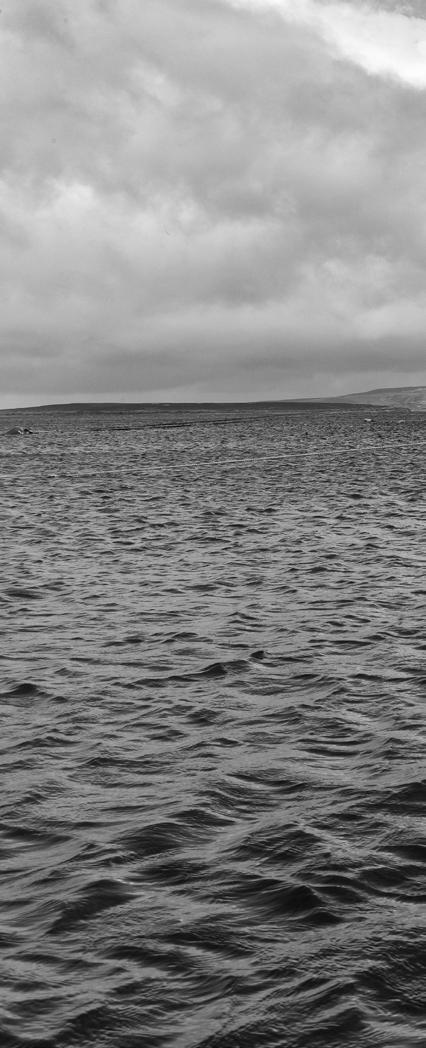
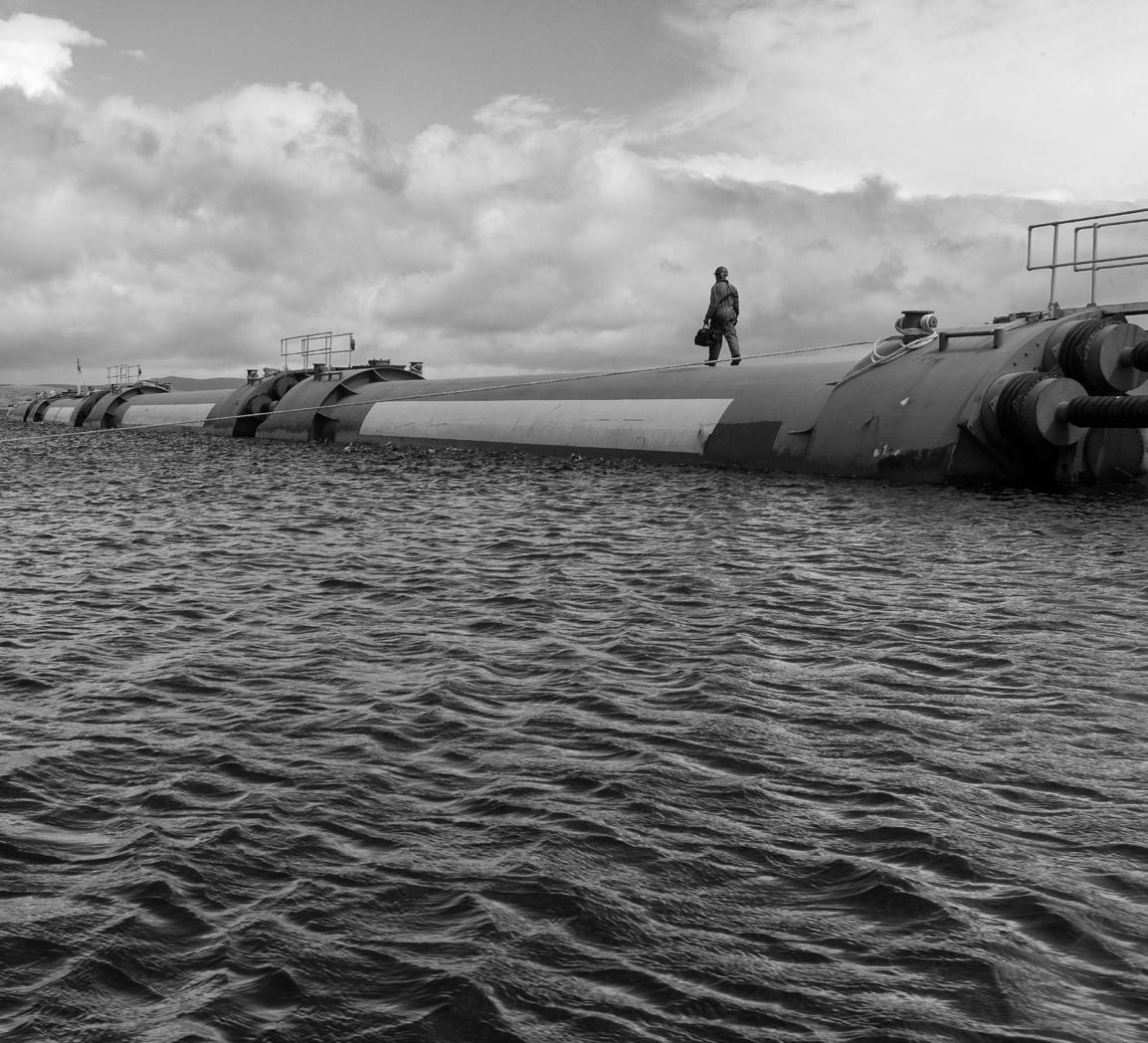
MC: You were President of Magnum from 2006-2009. Hard work? A pleasure?
SF: It was a duty. I’m Vice President at present. It was a valuable thing to do, but takes up a lot of time and is quite distracting. It’s necessary to participate in how it works and how it survives.
MC: What has been the highpoint of your career?
SF: Good question. Highpoints were always when I could go on assignment and in the last few years this hasn’t happened as much. Most of the documentary work comes from the people we know, the people we’ve grown up with, and there are less contacts now.
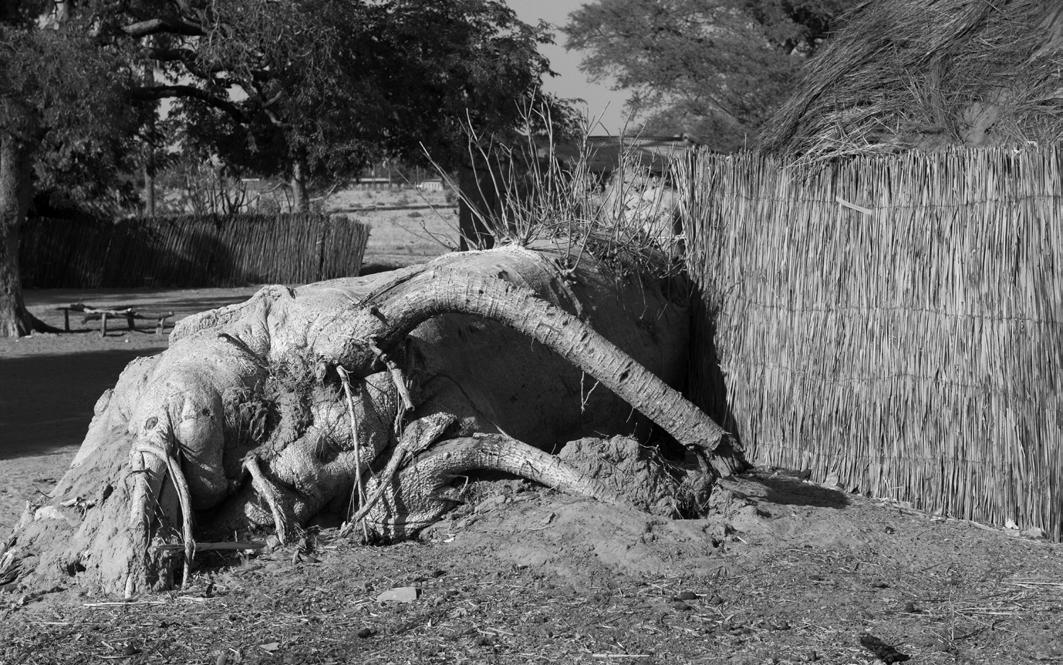
MC: If you were still busy with assignments would you have moved into writing and teaching?
SF: These things happen by chance. My life is something of a lottery and it’s only occasionally that I follow my own agenda. I love teaching students who are really committed and engaged. I learn as much from them because of the way they engage me. Teaching is a good way to explore ideas and so many ideas in photography are pitifully unexplored. There’s probably more been written about boxing than about photography. To have written The Documentary Impulse means that I can engage, at least a little, with the discourse.
MC: You were working as a photographer when you went to Oxford to do a degree in Geography, followed by your PhD on the social interface between nature and society. Why?
SF: I was dealing with complicated stories at National Geographic, and directing stories on megacities, environmental justice, depletion of the rain forest, and desertification. I needed to be able to understand them, to comment as a photojournalist. I was able to do all my research while on the road for National Geographic and they supported me while I studied. During my PhD, where I had an ESRC grant, I was still able to do assignments.
It became interested in problem solving and trying to understand what environmentalism is, and from this came my first book ‘A Time of Trees’, which is about nature and society and this complicated dialogue between man and the planet. The politics of environmental justice are interesting to me.
”
MC: How did the Documentary Impulse come about?
SF: I was driven to write it by the sense that photography and photographers were not taken seriously as to the power of the still image. They were just illustrations of text or a lesser form of video. I wanted to sing a song for photography, particularly, documentary photography.
I don’t think we understand how images work on us, how they connect with experience and memory and how powerful they are. Photography carries its own rhetoric and rhetorical force which is quite complicated. I wanted to talk about that, and for example, the role photography had played in the anti-apartheid movement or how we treat mental health.
Photography (and painting) has played an important role, in so many ways. I tried to take it out of its ghetto and connect it to the larger impact of visual images. For example, John Singer Sergeant’s ‘Gassed’. I didn’t want to say photography is different, as it has so many connections to the history of art in general.
MC: Is there something you’d like to do that you haven’t tackled yet?
SF: I’m trying to work on a couple of new books and if I can get them done, and they’re really special, then I’ll be happy. Photographically I’ve tackled most things, although I’d love to do more portraiture. I like meeting people one to one and in journalism you don’t meet people in quite the same way.
MC: What advice would you give to a young photographer starting out today?
SF: I think you have to follow your heart, be 100 percent committed. It is a vocation. There’s a difference between commercial photography and photography which reflects how you view the world. If it’s the latter you become akin to poets, painters and musicians.
MC: Do you take photographs personally?
SF: All the time. There’s a blurred line between the two.
MC: Stuart Franklin, thank you. It’s been a privilege and a pleasure to interview you.
Interview by Mo Connelly
Want to put your documentary skills to the test?
Want a one on one all day session with Stuart Franklin HonFRPS?
Want a fully funded private view and exhibition at a London gallery?
All of these could be yours if you enter The 2017 RPS Documentary Photographer of the Year competition opens for submissions from the 15th March.
The competition is open and free, to all RPS members.
Every photographer has a documentary strand in them, after all what is a picture in its simplest form but a document of what we see. I remember the first competition in 2012 the Enthusiasts were sent out on one of the coldest February days to shoot the faces of Portobello Market while the Experts visited the centrally heated Comic Con exhibition at the Excel Center. From those early days the competition has grown in both entrants and importance. You’ll see from the below images how far we have come.
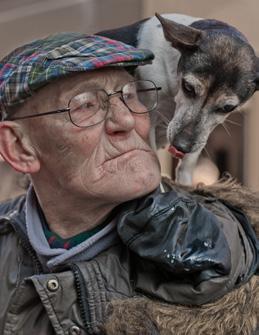

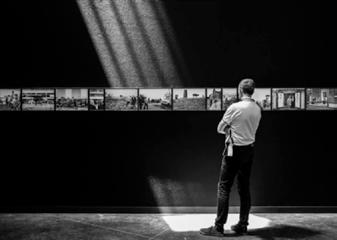
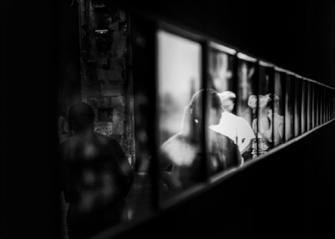
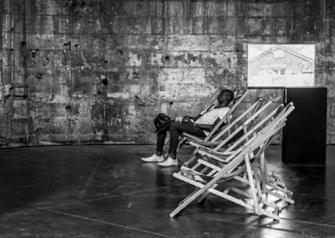

We have made a few changes this year, gone are the Enthusiasts and Experts categories to be replaced with Colour and Monochrome categories. We are looking for a photo essay, plus title consisting of 5 images on a subject of your own choosing. The judges will be looking for documentary photographic essays that are representative of the subject matter. The competition will be open to all members of the RPS and will be free to enter. The closing date is 30th June and the three finalists in each category will be informed by the end of September.
The finalists plus the overall winner will be announced at a Documentary Group private view to be held on 19th October at The Printspace. They will pint and mount the winning images, exhibit them for two weeks and will offer prints available to purchase. 70% of the sale price goes to the photographer. We have a wonderful prize for the overall winner, a one on one all day session with Stuart Franklin PhD, Hon FRPS, former president of Magnum. Known worldwide as the author of the Tiananmen Square tank man an image that changed opinions and the Chair of the Judging Panel for the World Press Photography Awards. Other prizes to be anounced.
Judges for this year will be;
Alison Baskerville ARPS
Ken Lennox Hon FRPS
Steve Kingswell ARPS AFIAP
This is a great chance to get your images judged by this professional panel of judges with some fine prizes for the finalists. All information relating to this Competition can be found on our webpages at:
http://www.rps.org/special-interest-groups/documentary/ blogs/2017/march/rps-documentary-photographer-of-theyear-2017
Good luck
Dee Robinson ARPS

DPOTY is proudly supported by theprintspace. Their online platform: thehub allows artists and photographers to easily promote & sell fine art limited edition prints of their work and order award-winning prints, mounts and frames for exhibitions.

Since its inception in 2013, the Café Art MyLondon project has been supported by The Royal Photographic Society and is held annually in July.
Café Art connects people affected by homelessness with the wider community through their art. Their vision is that people affected by homelessness will be empowered through their own talent, and to be actively involved in a social enterprise helping people of similar circumstance, by sharing and displaying their art in cafés, pop-up exhibitions (both locally and internationally) by supporting the annual MyLondon photography contest and calendar.
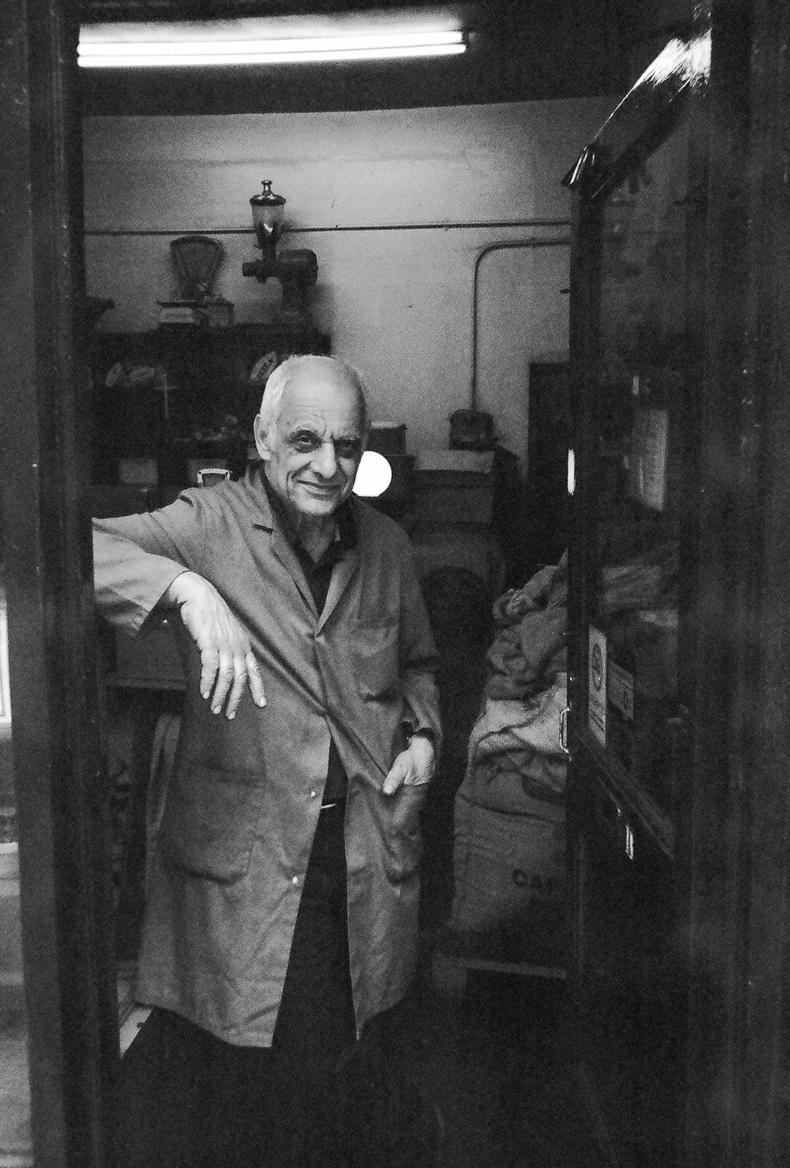
Single-use cameras are handed to upwards of 100 participants at St Pauls Cathedral, who are service users from many of London’s homelessness organisations. Photography training is provided by the RPS London Region volunteers and participants are given 5 days to capture images with the theme My London.
Black and white and colour prints are developed from the returned cameras. There is an 98% return rate which amasses to in excess of 5,000 prints. From these, 20 photographs are chosen by an independent panel of judges which includes representatives from Amateur Photographer magazine, Christie’s, FujiFilm, Homeless Link, The London Photo Festival, The RPS, as well as the previous winning calendar participants. The winning shots are displayed in special dedicated pop-up voting booths at Spitalfields Market E1 and other public areas and offices around London over a 2-week period during August, providing the general public with the chance to cast their vote for their favourite images. In excess of 2,500 votes are usually collected during this period.
The top 13 photographs (12 months plus cover) are selected as the MyLondon calendar. The calendar is sold online and in various markets including Spitalfields, Piccadilly St James’s, and across London from its launch in October until the festive period in December. This provides valuable work experience for the participants, as well as earning them a supplementary income.

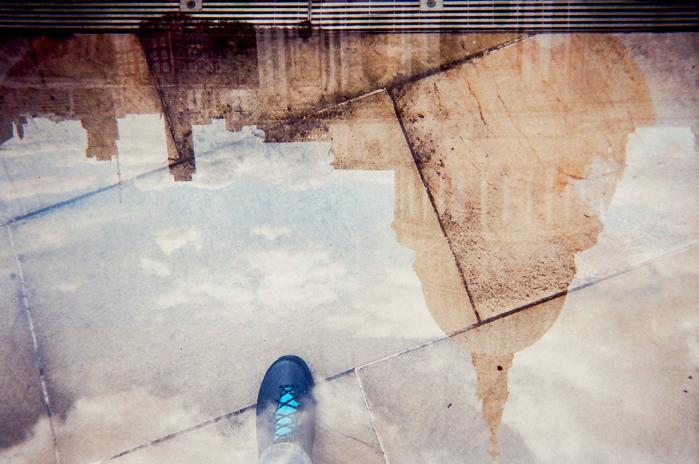
The success of the MyLondon photography project is attributed to how it empowers those affected by homelessness to engage with people and teaches both social and photographic skills, allowing participants to tell their personal stories through the exhibition and calendar. Participants assist with the running of the exhibition, and through the selling of photographs and calendars, learn important employment skills.
Previous winning photographer David Tovey, a former soldier who was forced into homelessness three years ago following a stroke. Tovey said, “It’s amazing the power of a disposable camera. A year ago I wasn’t able to look at anyone in the eye I had lost so much confidence. After getting two photos in last year’s calendar I gained a lot of confidence. It is great to have a project which helps people who are homeless in a positive way.”
Past and present winners have now been given the opportunity to learn more about photography through a mentoring group led by Neil Cordell and Mo Greig, who are both RPS London Region volunteers. The mentoring group was set up in November 2015 using reconditioned mirrorless digital cameras kindly donated by Fujifilm UK. Neil explains that the goal of the group is to help people improve their photography skills and to build their confidence when interacting with people they photograph. The group meets at Qbic Hotel on alternate Saturday afternoons, and starts with a session on how to use their cameras followed by a walk around East London if the weather permits.
The concept behind the photo project has now been taken up by cities across the world resulting in MyBudapest, MinhaSao Paulo, MyNew Orleans, MySydney and with Toronto and a few more cities coming on board in the coming months ahead.
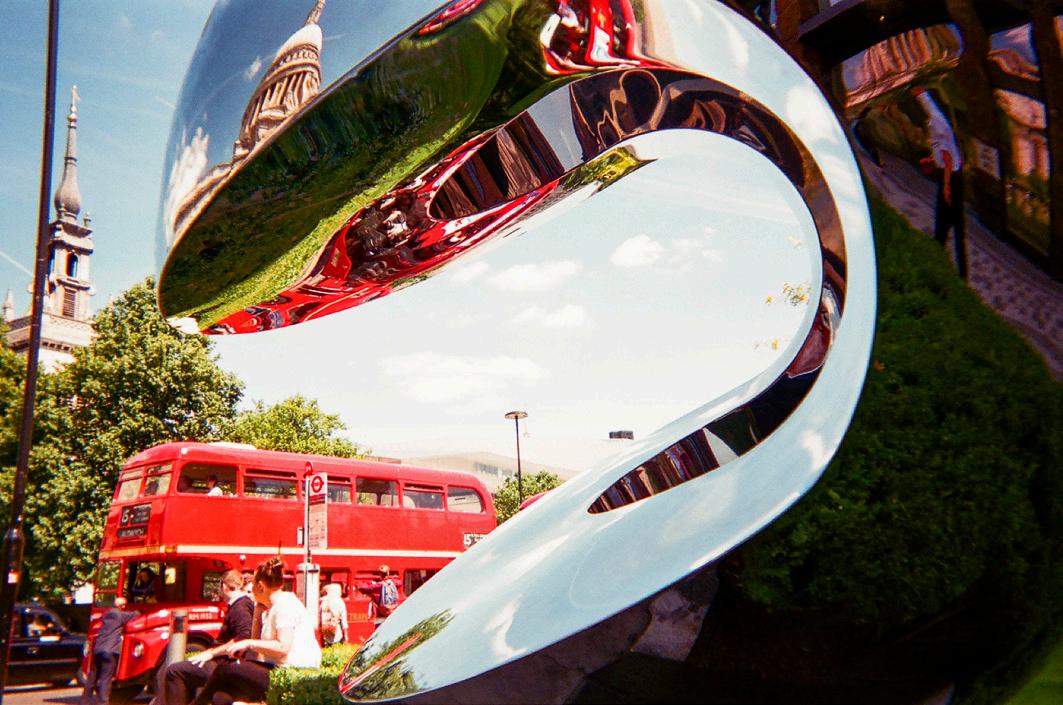
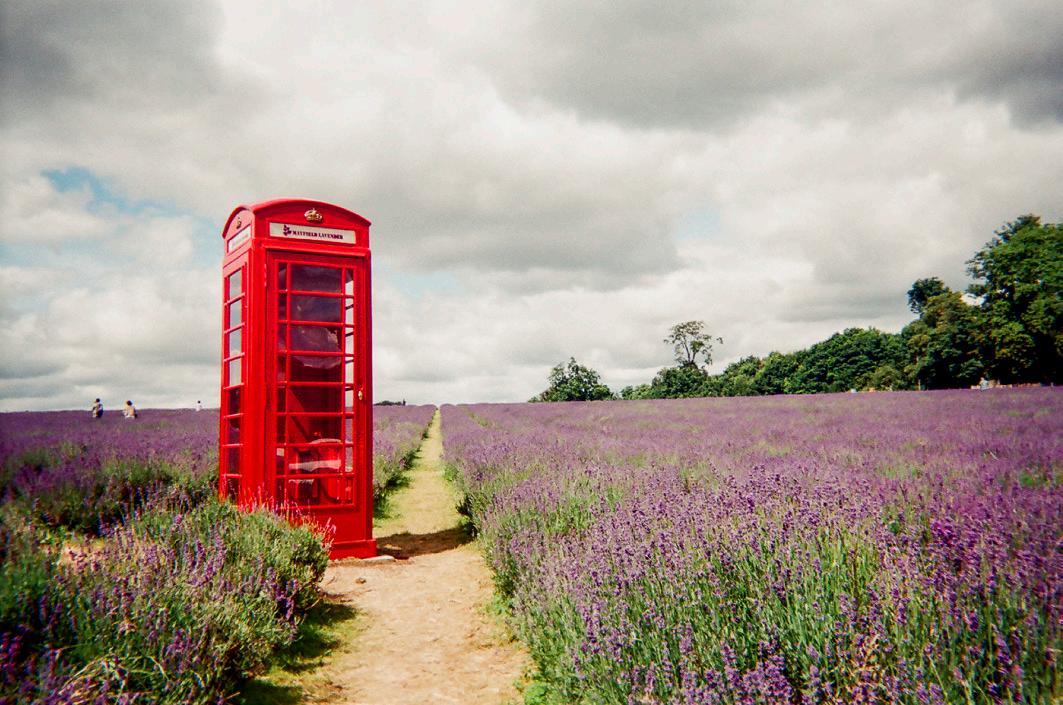
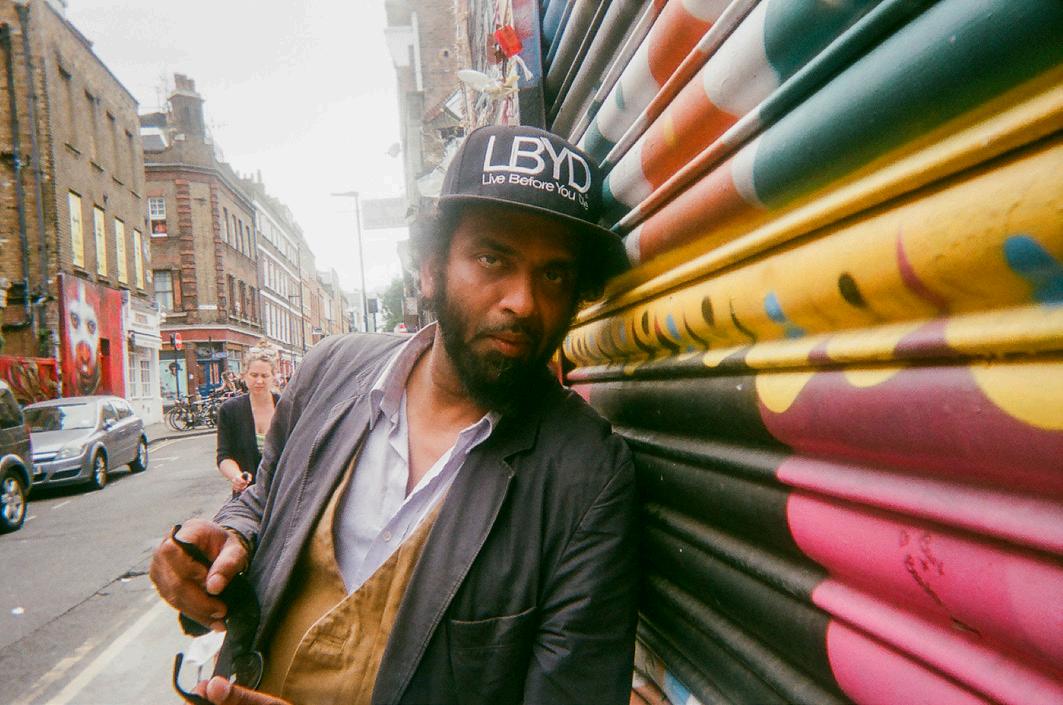
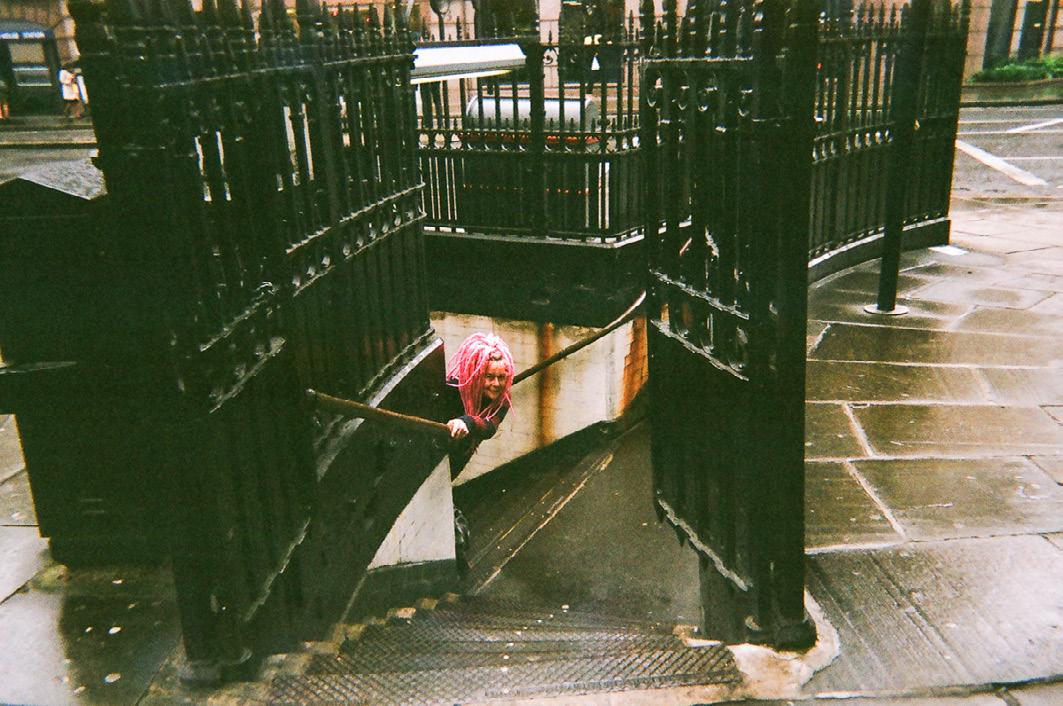
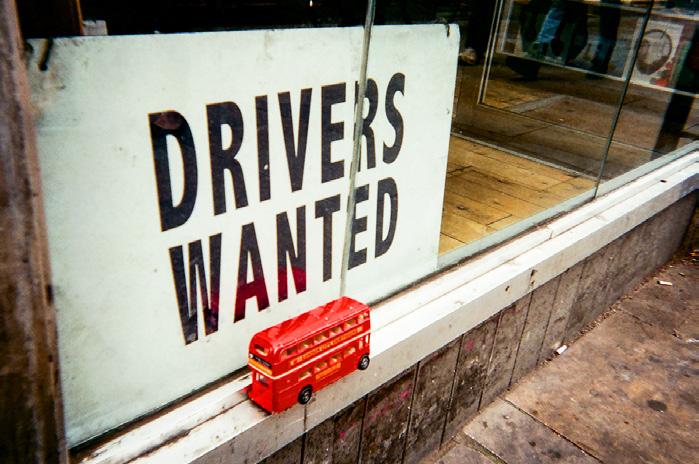
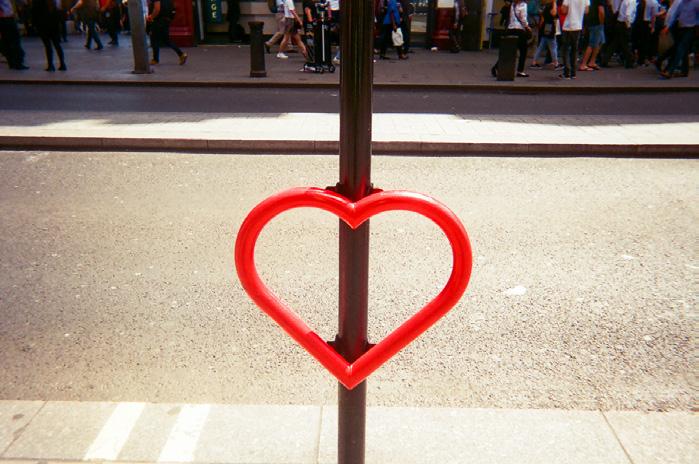
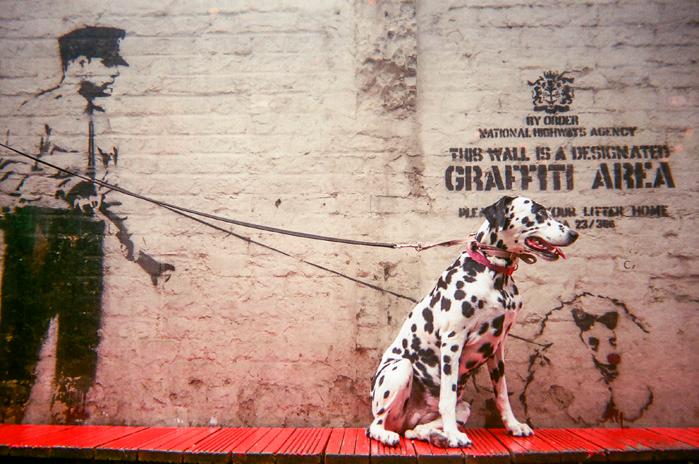
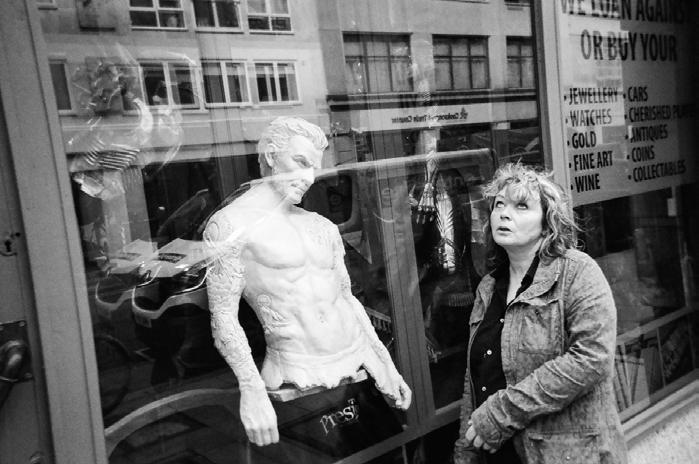

37 members entered this competition and the images were judged anonymously. Our judges had a tough time and after some initial deliberation eventually agreed on the winner.
Congratulations to Bob Train LRPS for his winning image ‘Life on the Tube’ and his prize, the book “The Documentary Impulse” by Stuart Franklin Hon FRPS, has been sent to him.
Bob said, ‘There is very little that I don’t enjoy photographing but I find documentary work is the most rewarding. My move from ‘big kit’ to CSC has enabled me to get better street shots. I look for and occasionally find the right fit between the decisive moment and the story. This shot was taken from the lap, with a Sony A6000, and I could see the misery of commuting and amplified this by a Mono conversion.’
The second Bi-Monthly competition, for images taken from the 1st February 2017 until the 30th April 2017, is now open. So get shooting...
Please send your submissions to dgcompetitions@rps.org and visit the competition page on the RPS website for details. http://rps.org/special-interest-groups/documentary/about/thedocumentary-group--bi-monthly-competition---28-february-isnext-closing-date


My work covers a broad range of projects and themes, cultivating in the back of my mind, and often taking many years to come to fruition. Some are based in photographic art and others in documentary and narrative. I do however like documenting my travels and keeping open to serendipitous events.
Visiting a friend in the local dockland marina I saw the divers in these pictures working just below his front window. I asked whether they would mind if I took some photographs. They were more than willing and were affable to the idea. I later returned a couple of times over the next few days.
They are a group of Scottish divers, commissioned to repair the dock walls in Southampton’s old docklands. The area is now an upmarket marina development and the dock walls are still the original iron pilings and facings installed when the docks were initially built.
The divers assess the damage, repair the iron facings, and then weld brackets with underwater arc welding gear which hold the huge 4 meter long sacrificial anodes. The way to counteract galvanic corrosion is to add another metal into the circuit, and one that is quicker than the other to give up its electrons.
I was struck by the skill of the divers and the support they gave to each other. Safety was the major concern and there was always a watcher as the diver submerged and worked below.
The process was laborious as each diver spent just 45 minutes in the water. As the diver emerged his team mates would help pull him up and remove his diving suit. Then the next diver suited up and went down. In just a few days they had repaired and protected hundreds of meters of dock walls.
The admiration for these fellows skill and alacrity in a very unusual profession is enormous. I learnt their skills were developed on the oil rigs in the North Sea.
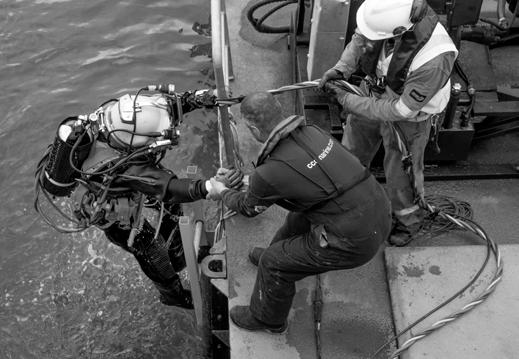
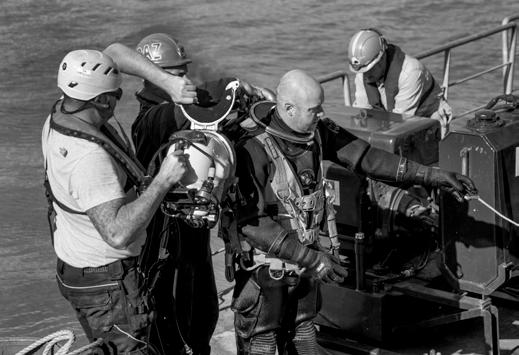
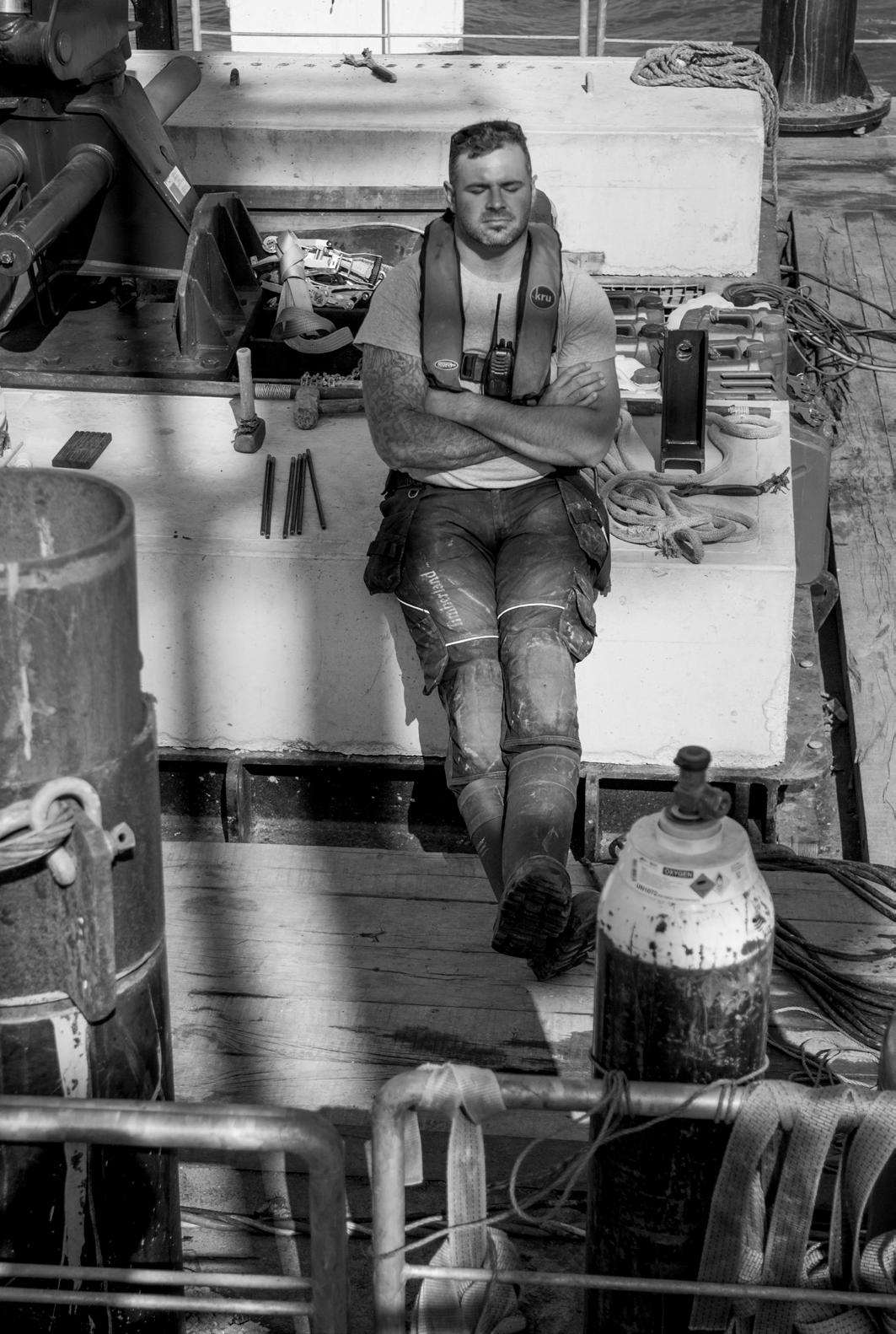
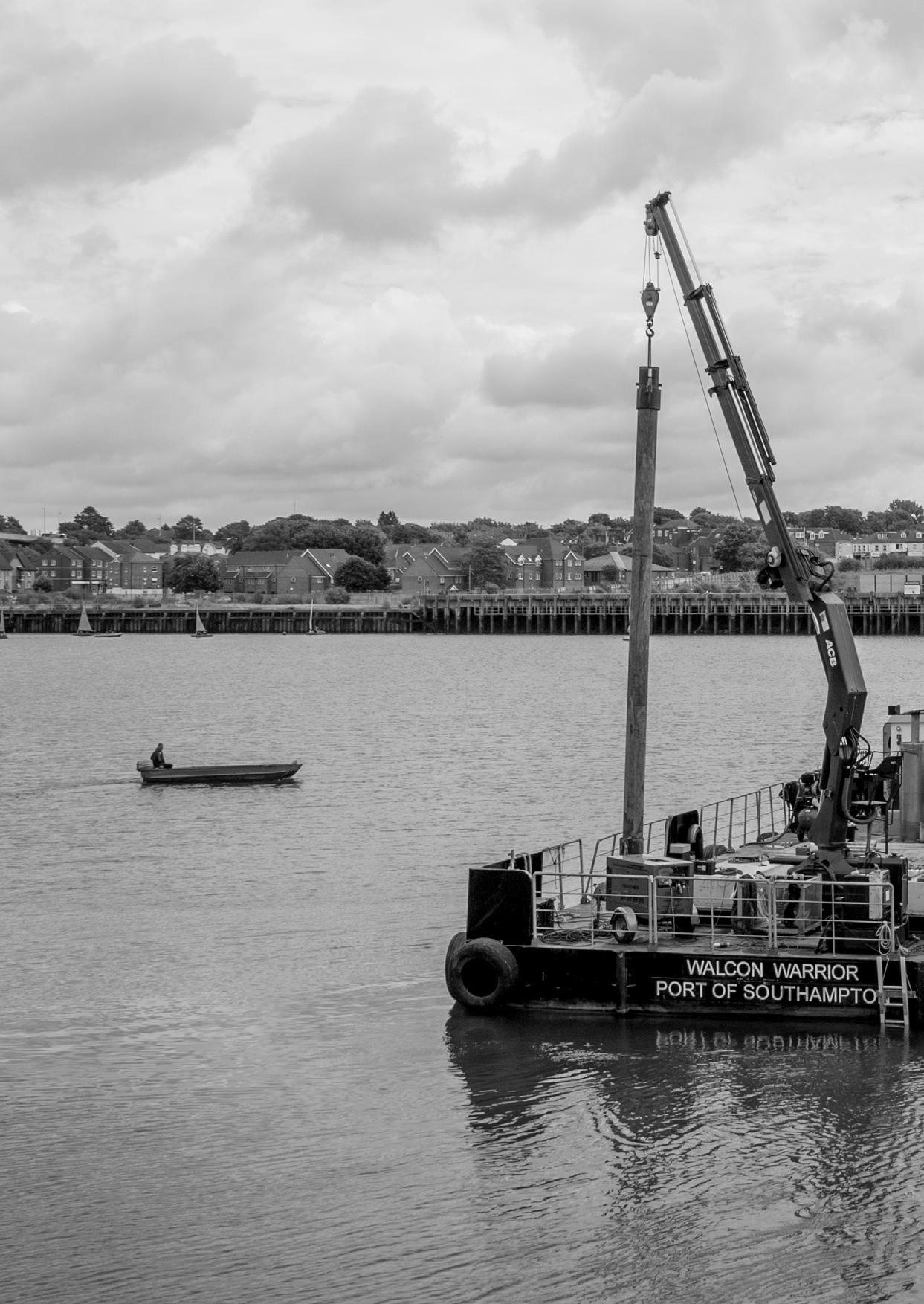
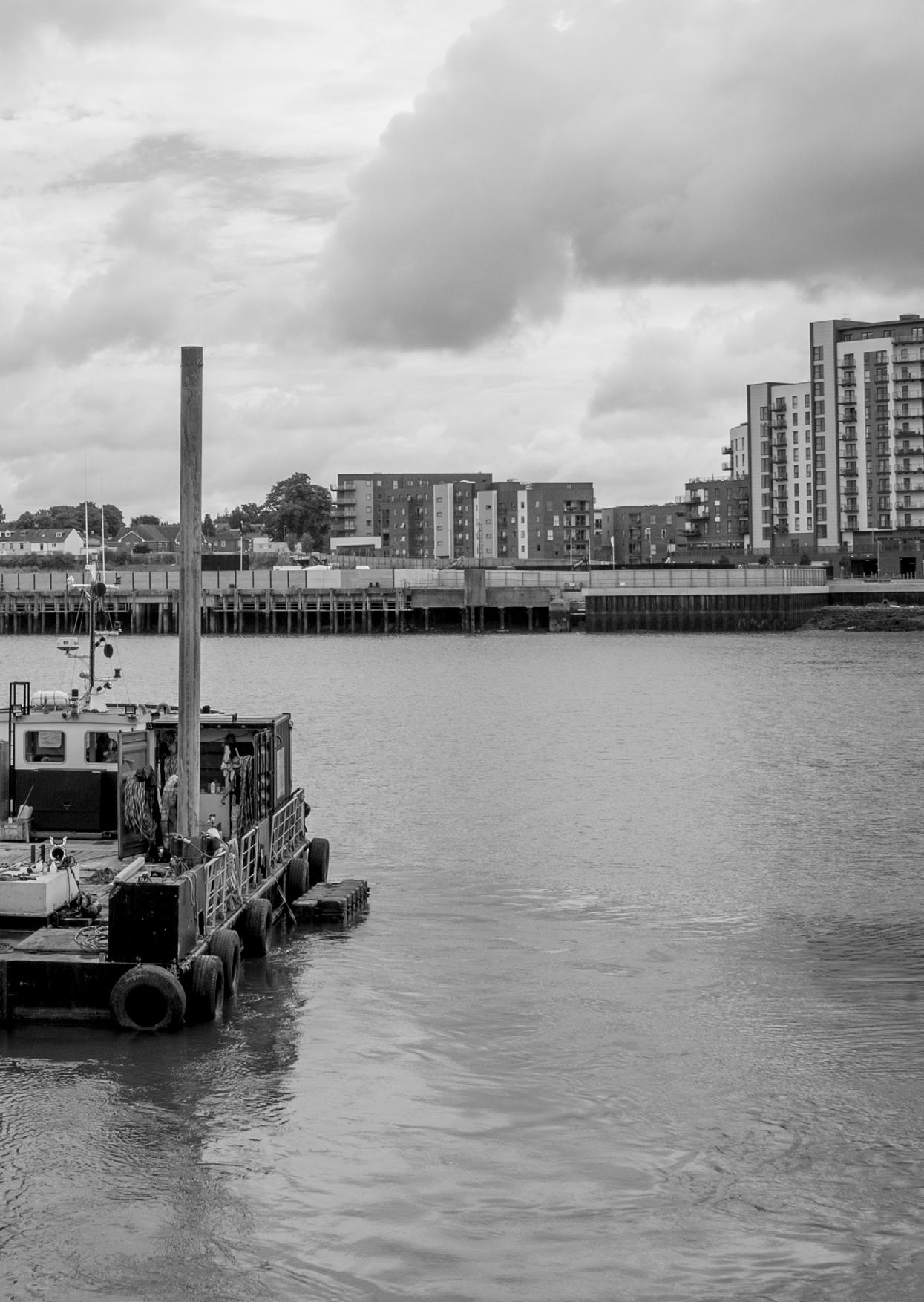

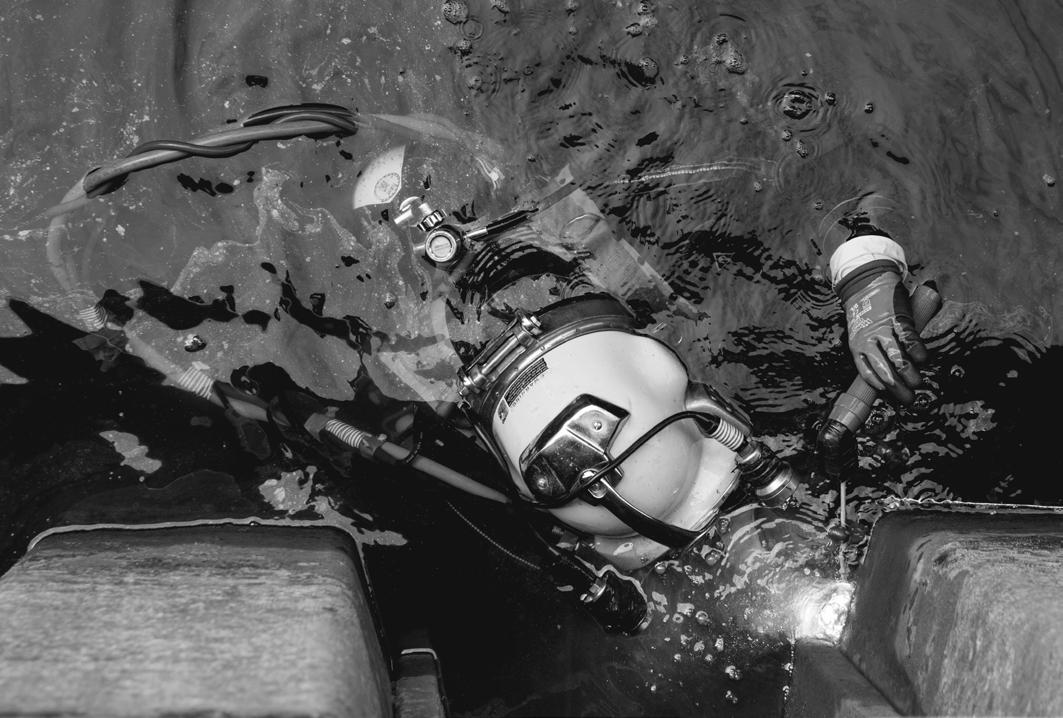

Submerged
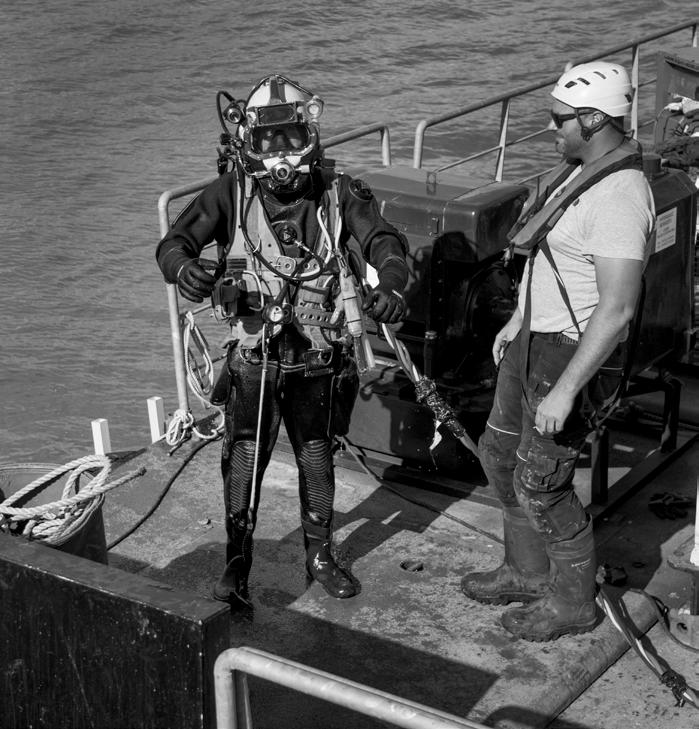


Fidel Castro’s death was announced on 25th November 2016 and I arrived in Havana a day later and staying until 9 days after the official period of mourning. It was a fairly strict period with no music and no alcohol.
I was aware that condolence books were being signed in the Plaza de Revolution as huge numbers of coaches were parked in the Malecon but I was actually invited to sign in the Plaza de Armas in the centre of Havana. Here you can see two newspaper sellers with the current issues announcing Fidel Castro’s death.
On the Tuesday evening there was a big formal event, in the Plaza de Revolution, for world leaders, prior to the departure of Fidel’s ashes for interment in Santiago.
I set off before 6.30 am, the next day, to photograph the fishermen on the Malecon to find the streets lined with people waiting for the procession with the ashes to pass by. I joined the crowds and positioned myself so I could photograph the crowd‘s reaction. The event was very muted and people simply photographed it with their phones and a few saluted.
I followed the route of the ashes to Santiago, and for several days collected various images on the way. The first two were taken in Sancti Spiritus one in the main square and the other in a government office. The next three images were more personal. The first two were in Trinidad. Hasta Siempre, Comandante are the words of a song written in 1965 by the Cuban composer Carlos Puente in response to Che Guevara leaving Cuba to fight and eventually die in Latin America.
The final two images were taken at Santa Ifigenia cemetery in Santiago and depict an official, saluting at Fidel’s tomb and a little boy waiting with his schoolmates to enter the cemetery to pay their respects. Our Cuban guide told us that it would take the cemetery two years to return to normal. Such is the interest of this momentous event.
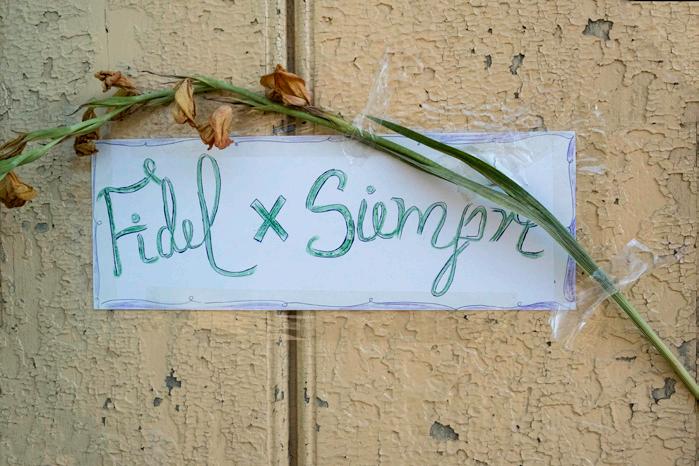
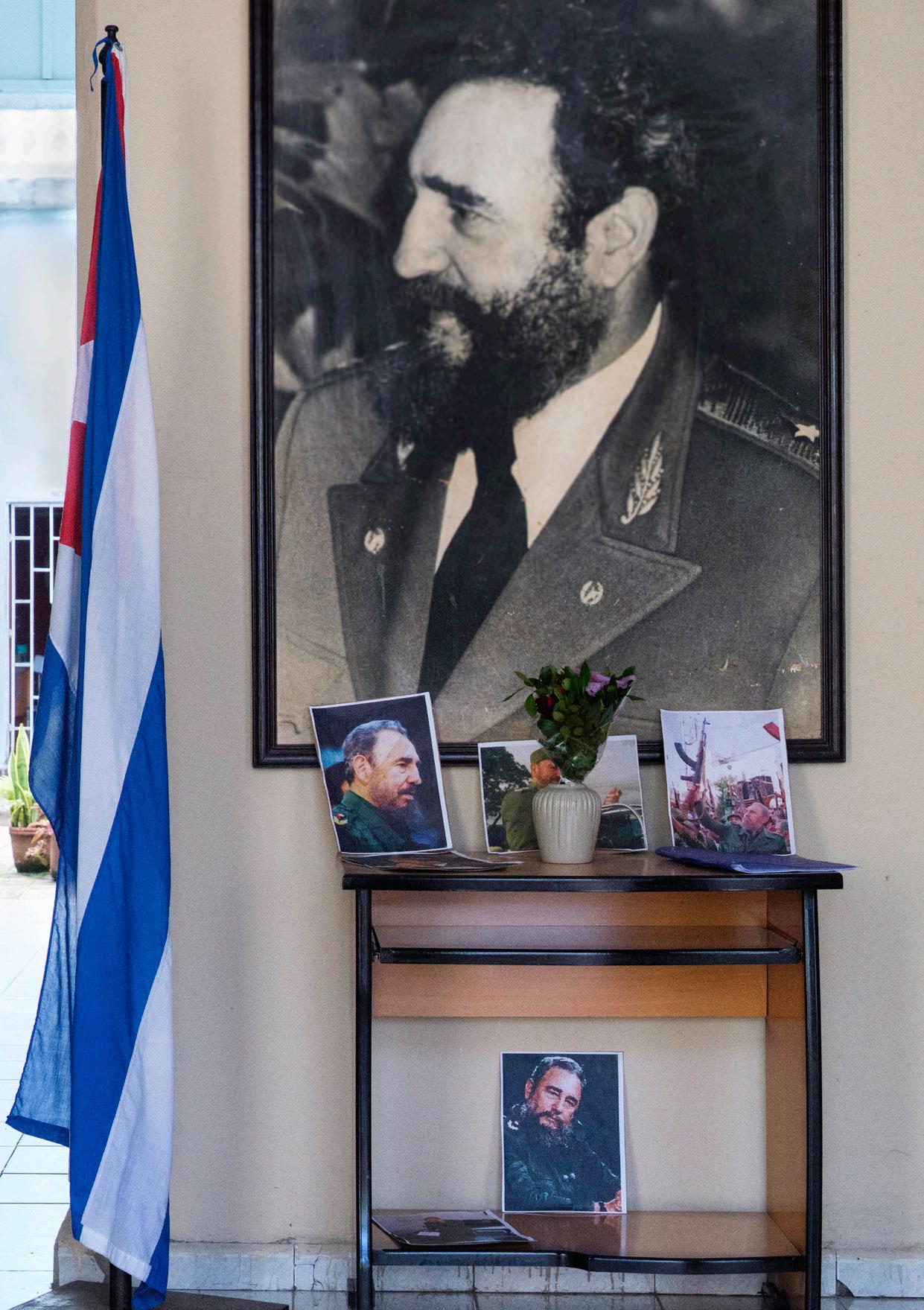
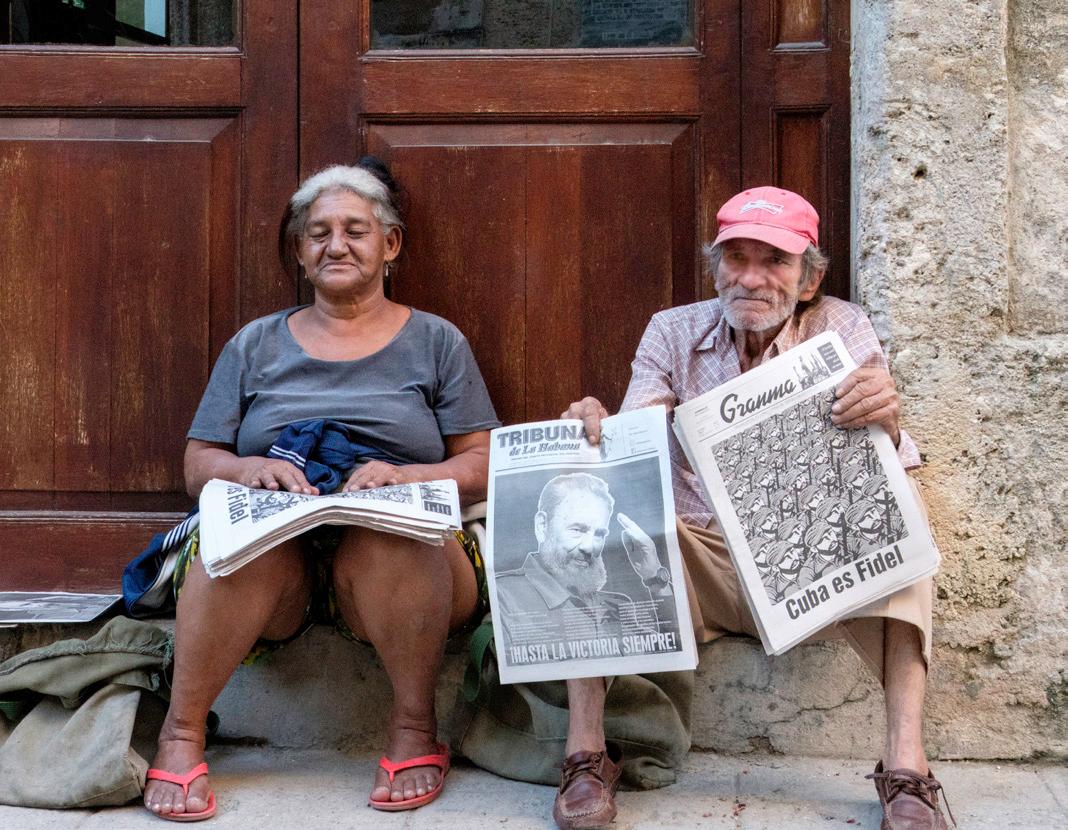
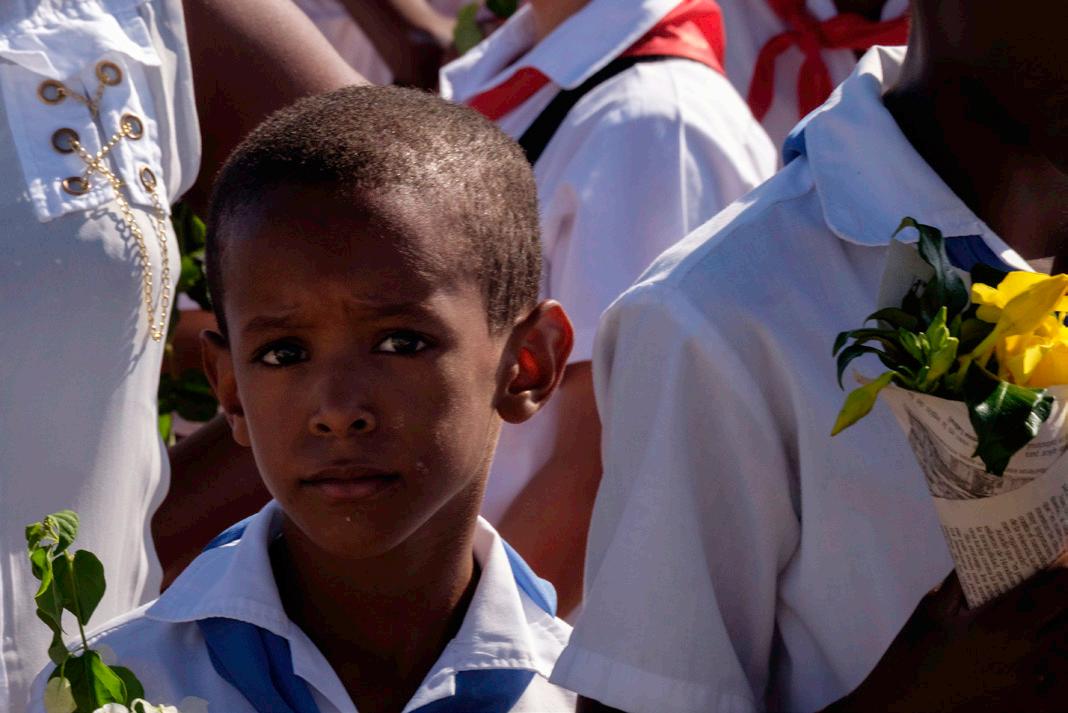


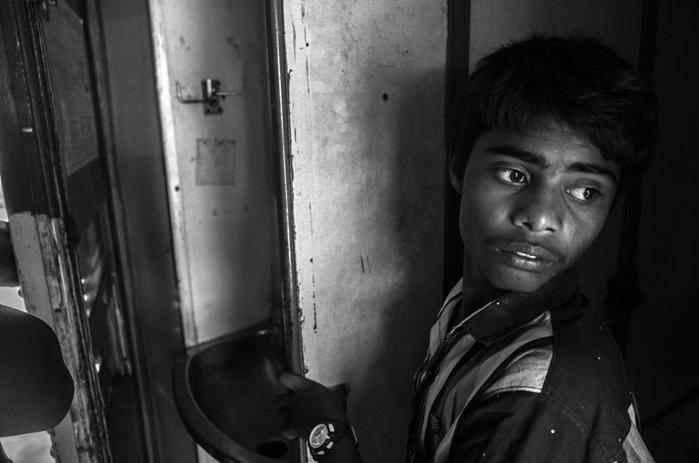
In January I visited Bangalore . My main photographic subject is always people, and India just seemed like it would be an amazing place to photograph them.
I’ve done a few similar trips, to places like New York, where I just go it alone, indulging myself by walking as much as 8 hours a day simply following my instincts. I call it ‘fishing’ because I just walk about photographing whatever interests me and, when I get home at night, have a look in the net to see what I’ve caught.
An Indian train journey has always been something I’ve wanted to do, so I took the train to Mysore and it was just as I had imagined; people hanging off the roofs and running up and down the train selling food and water.
Mysore was a bit more rural that Bangalore, so it provided a contrast to the hustle & bustle of the city.
As far as my own photography goes, I began trying to make my own images seriously in May 2013. I like to work in a documentary style and have 3 or 4 ongoing projects at any given time.
Street photography is a big part of what I do because usually I like to photograph people candidly.
Some of my work has just been selected as part of Image Nation’s Street Sans Frontières exhibition in Paris this May. www.streetsansfrontieres.com
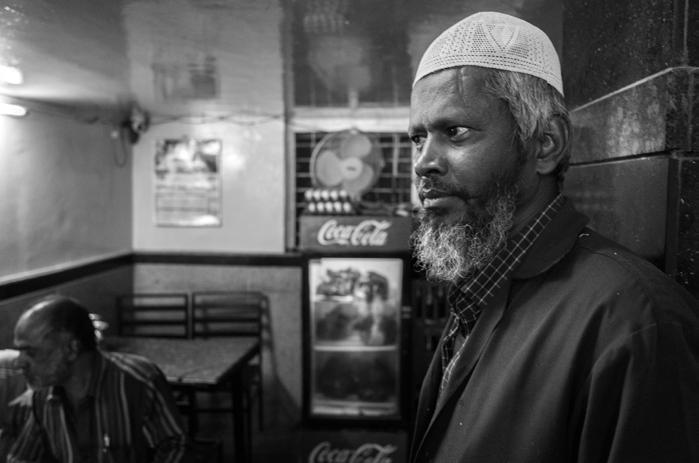
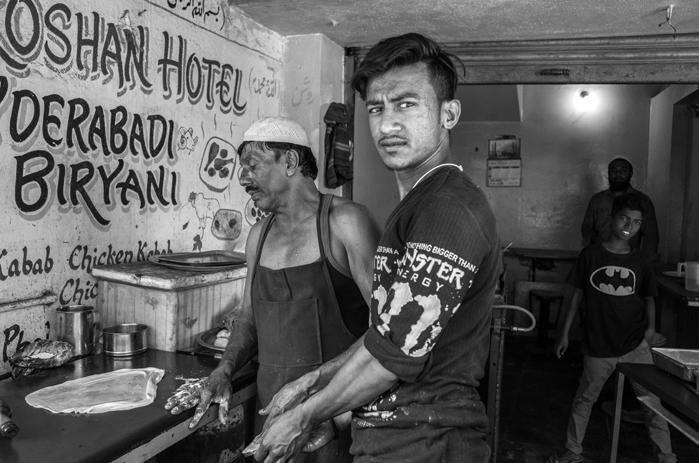
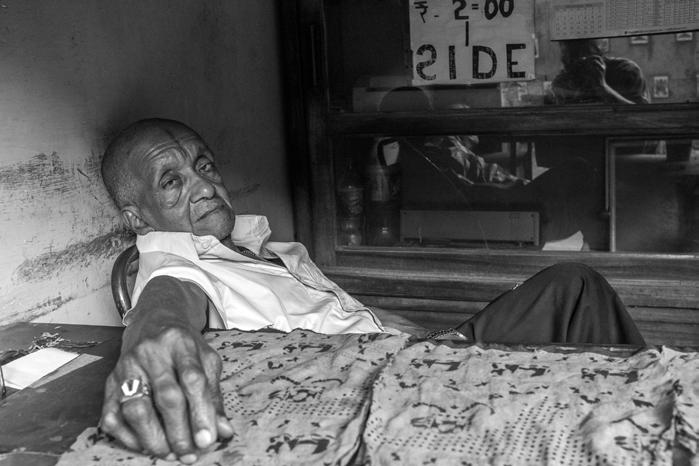
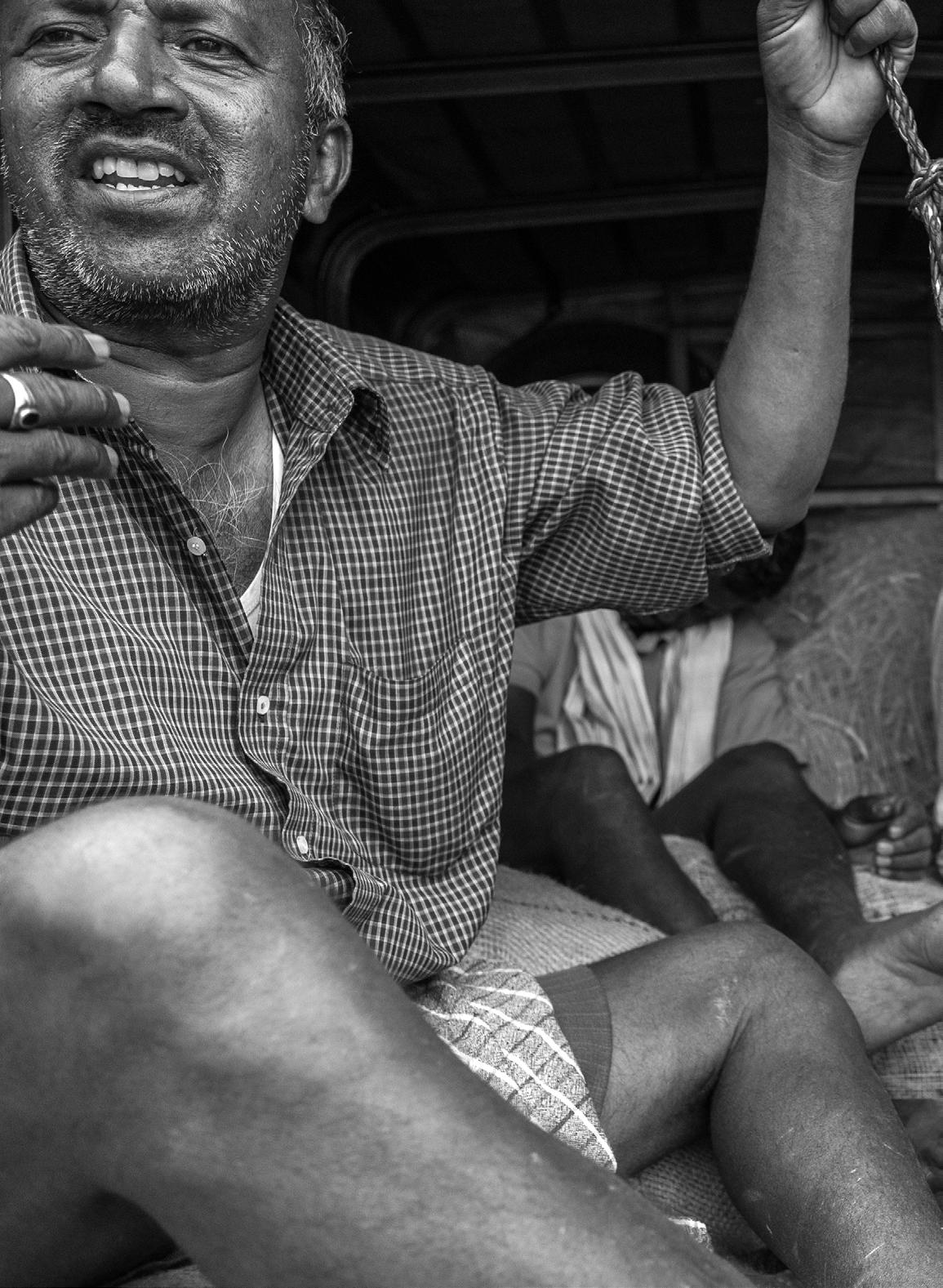

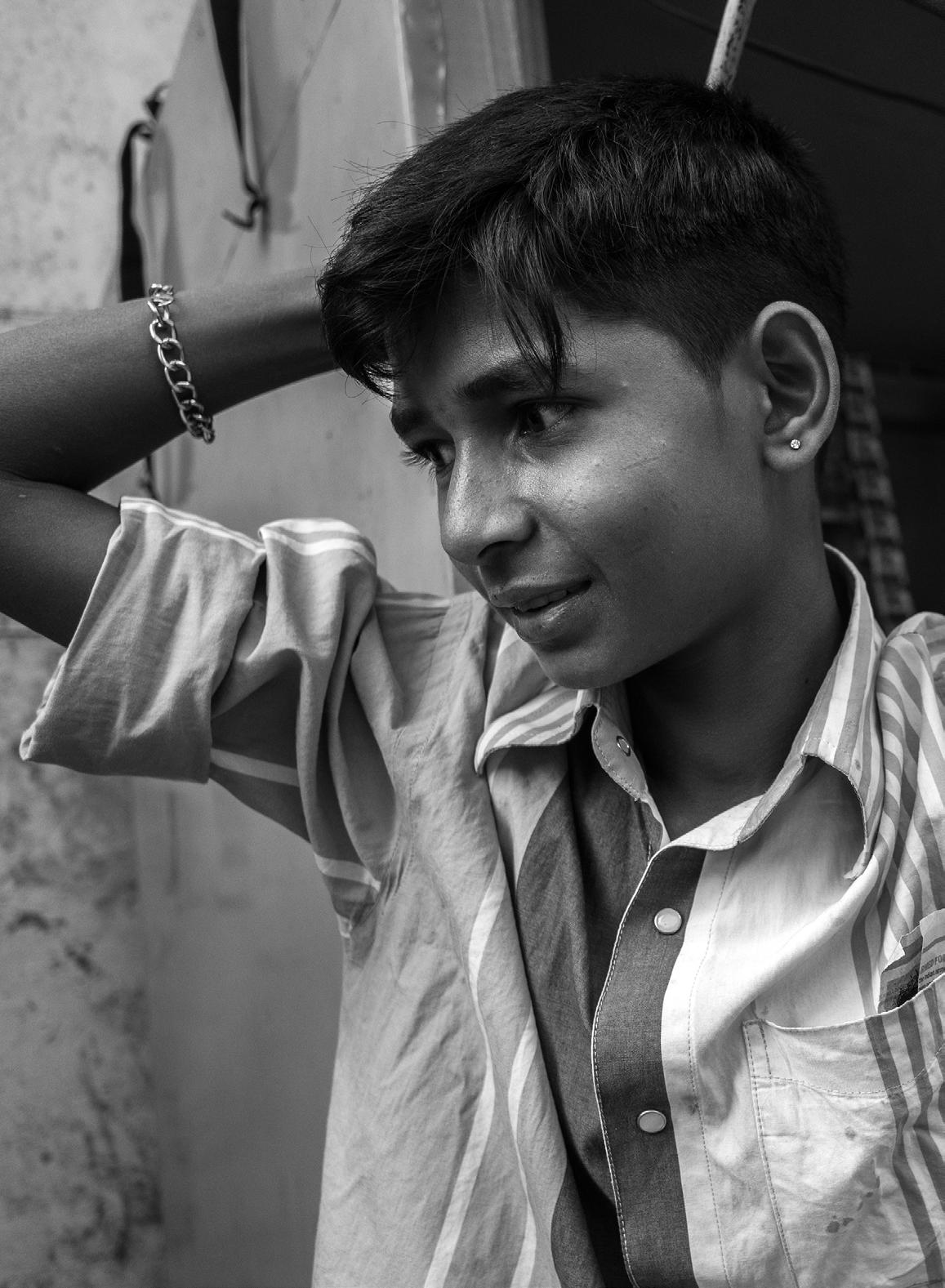


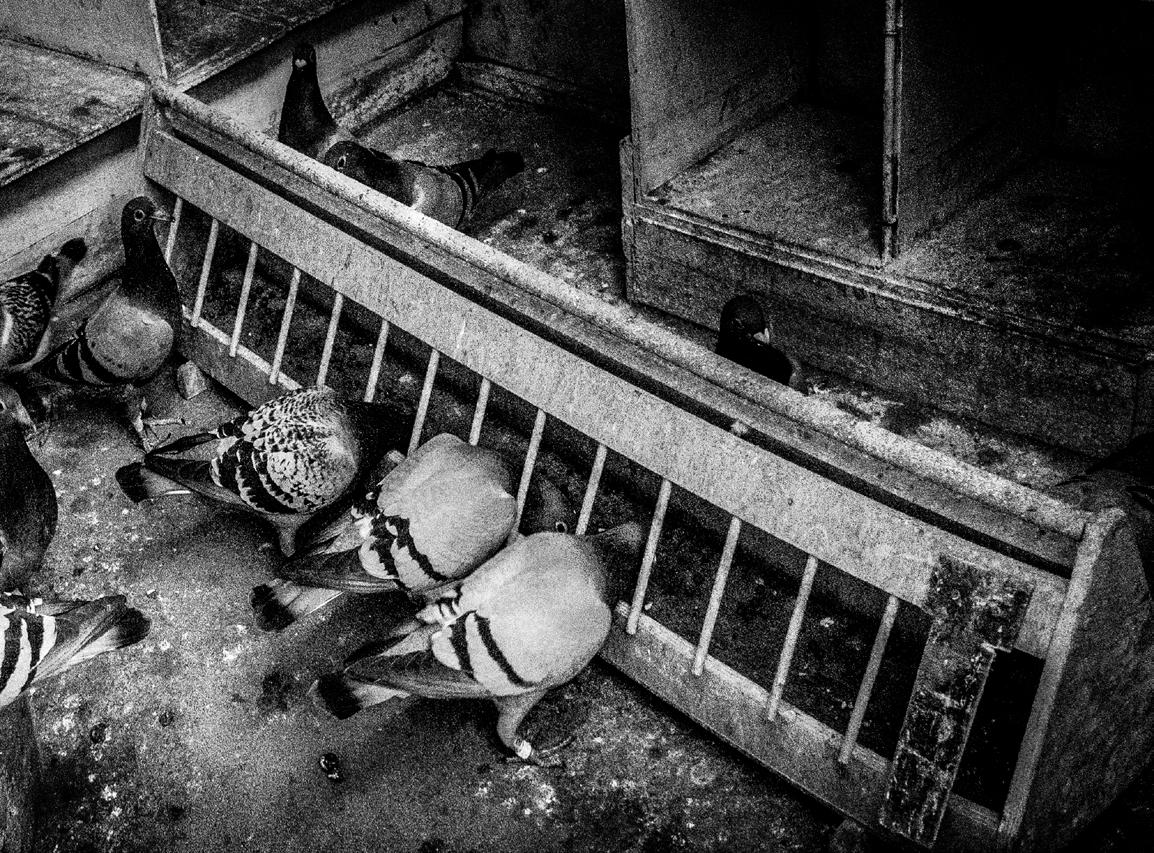
Jim Harrison keeps 80 racing pigeons on his allotment in Blackhall, County Durham.
It is February and the racing season doesn’t start till April, so Jim is busy exercising them to build up their strength. “We let them out a couple of times a day. With the young ones, we start them at about 5 miles and work up from there. The big races are around 500 miles, so they need a lot of stamina. Success is all in the breeding” explains Jim as he shows me around his pigeon loft.
As one of Blackhall Homing Society’s most successful members, Jim knows what he is talking about. “I start breeding them when they are about 8 months old. We add a drop of oil to the feed - that gets the males a bit frisky, and then we put a china egg in the hen’s nesting bowl to get her to lay.”
“We’re all very competitive, but mostly in a friendly way!” With 5 winners in his last 7 races, Jim has had more than his share of success. “I love my birds - they’re my life.” he says looking fondly at the pigeons flying above us.
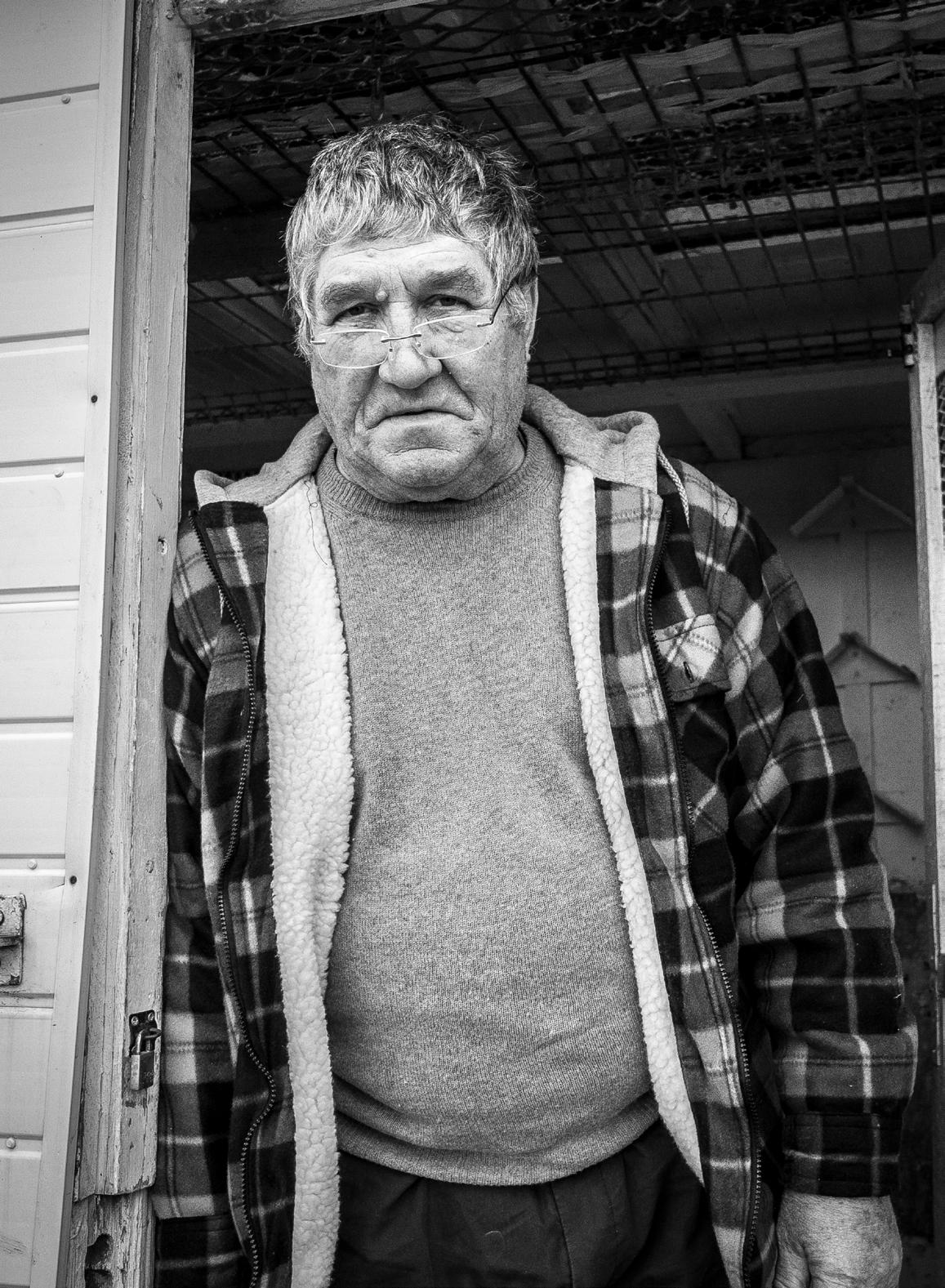


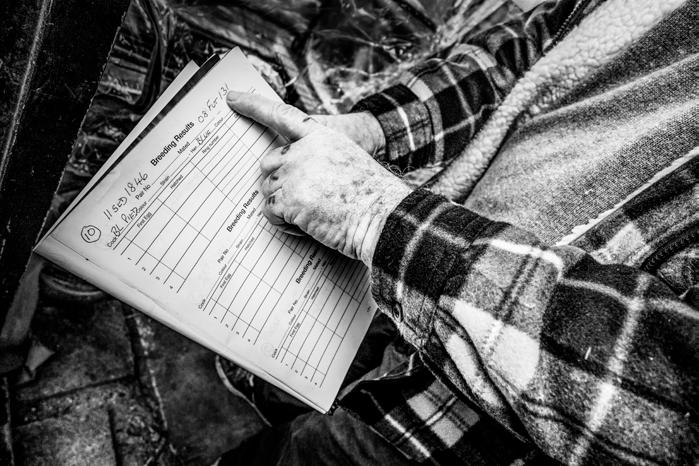
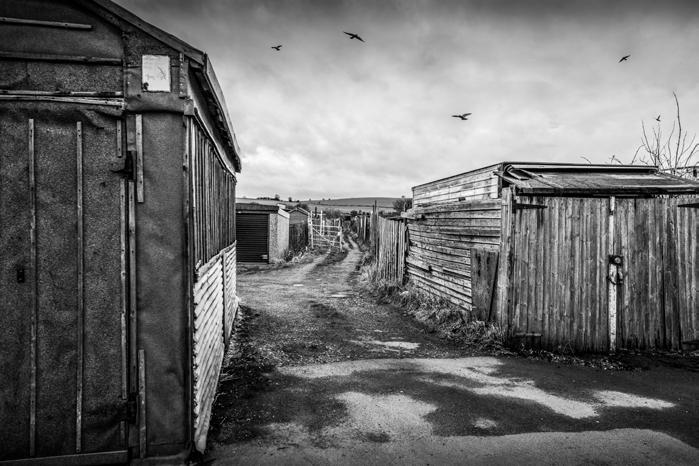
HAKART (Hakart Copper & Brass Manufacturing Inc.) is an oldestablished family firm in Istanbul, Turkey. Originally founded in the early 1920s in Nevsehir, Cappadocia, by Dervis Ali Doyran, the grandfather of the current managers, the business was moved to Istanbul by his son, Mustafa Doyran, in 1965.
Hakart produces a wide range of new copper and brass decorative items: housewares, garden furniture, tableware, and copper kitchenware. All its products are handcrafted from solid copper and brass discs and plates by specialized artisans using traditional processes, such as hand-hammering and tin-plating.
Around 90 people are employed in the company, including the highly skilled coppersmiths, who started as apprentices many years ago, and now (with years of training and experience) are today’s master craftsmen. These artisans are the heart of Hakart; many are following in the footsteps of their fathers (and their father’s fathers). The future of Harkart depends upon finding and training new apprentices who can become the artisans of tomorrow, a major challenge in today’s environment.
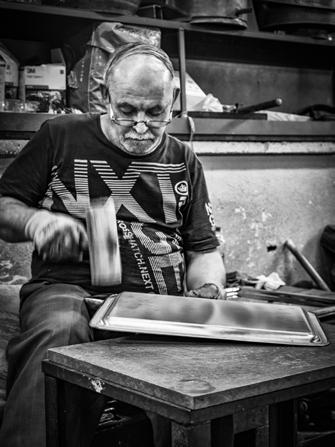

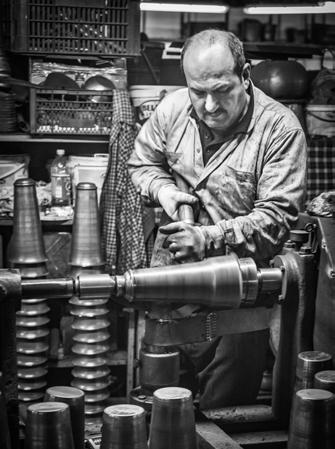
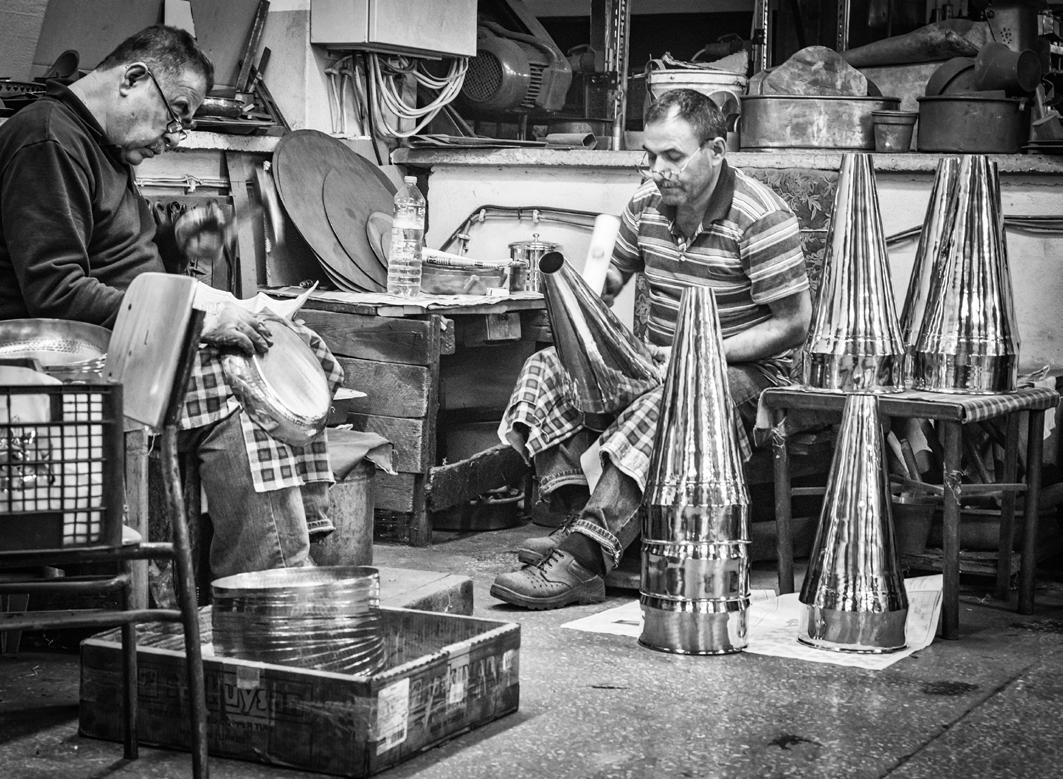
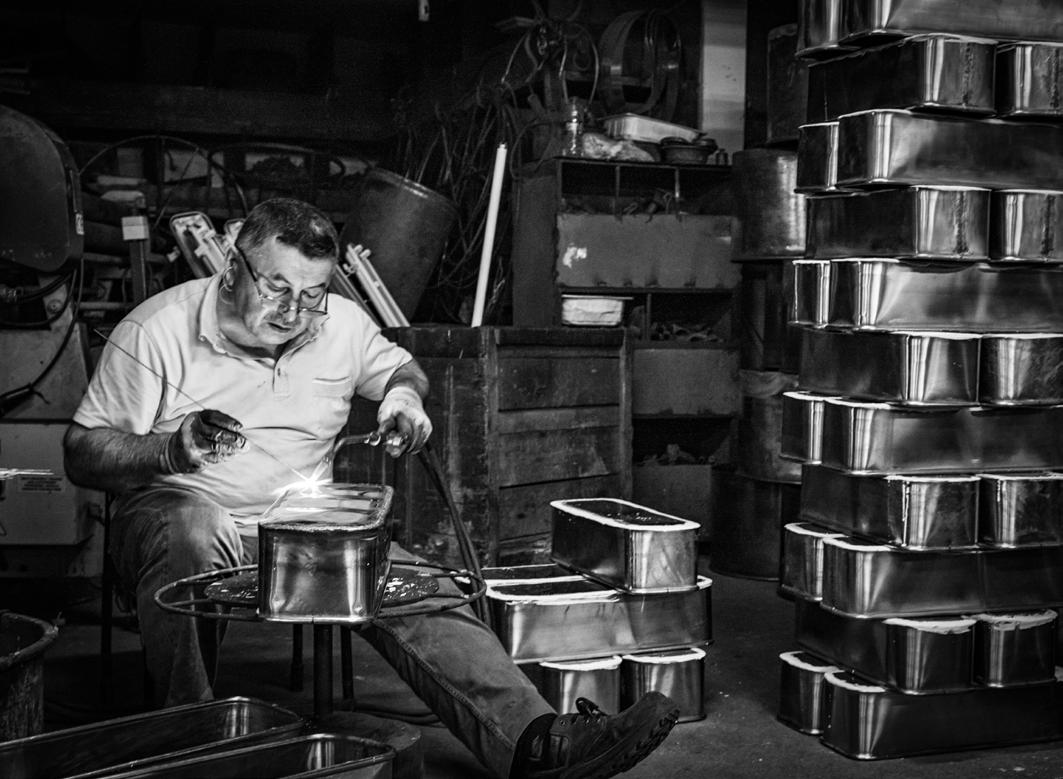

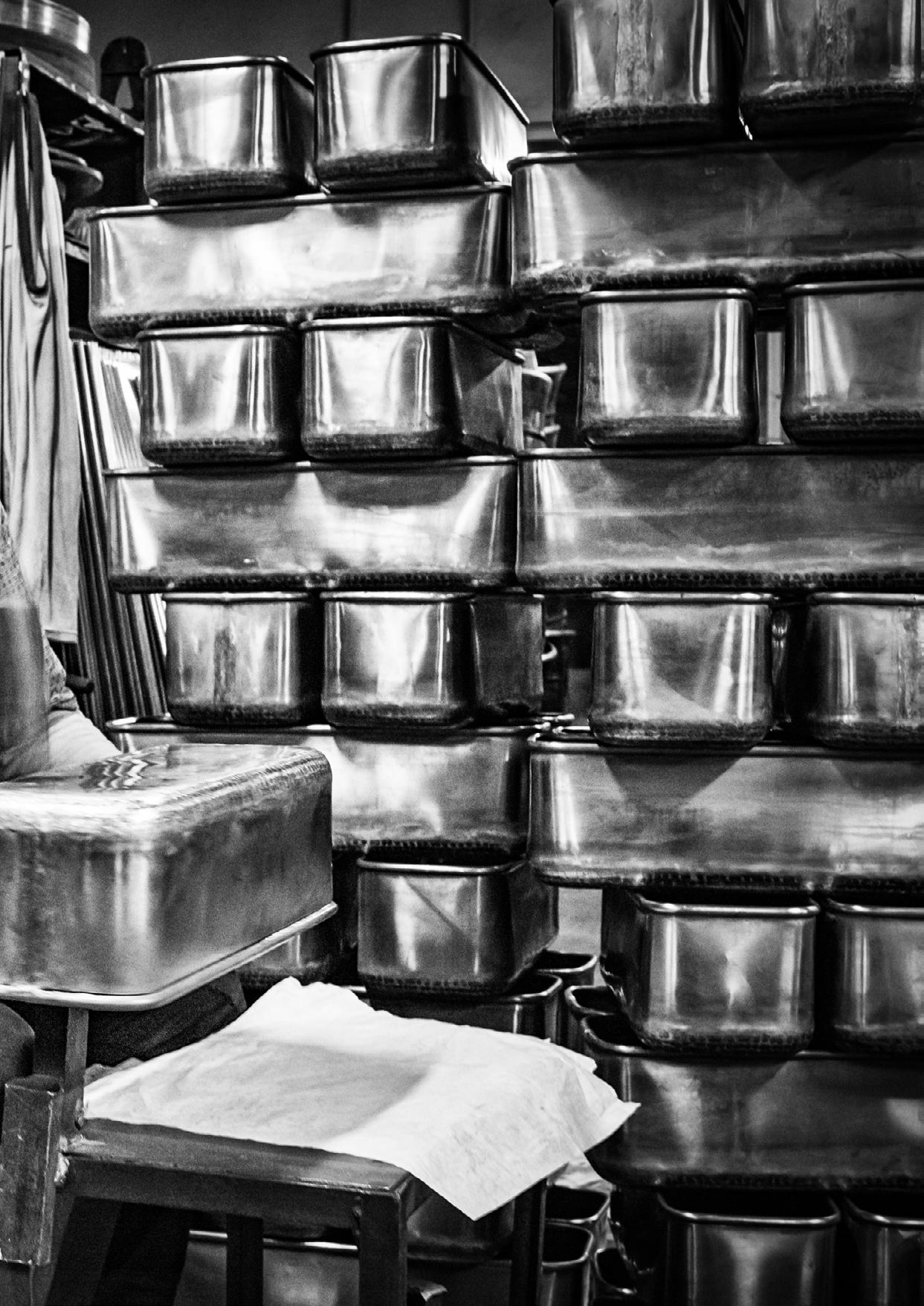
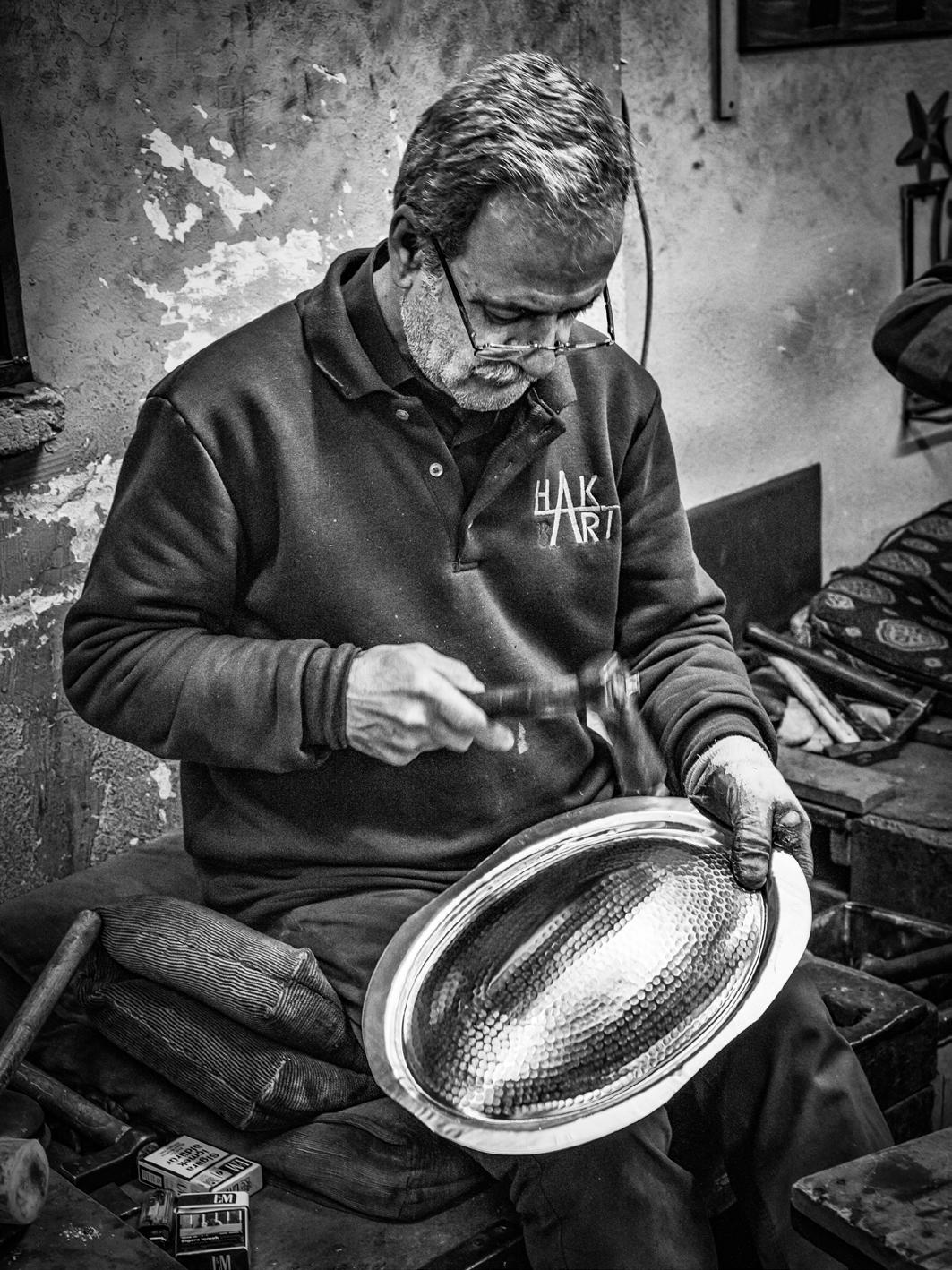

I’ve enjoyed music all my life and when I went to study in Cardiff, I started to attend gigs and found that live music was so much more. You feel the music as well as hear it, and watching the performance just gives the music an extra dimension. I went to many gigs in my early twenties.
In 2006 I was given the opportunity to photograph from the pit at The Cornbury Music Festival. I combined two of my favorite things and through luck and contacts I’ve managed to get access to take photos at festivals and gigs every year since.
What I like about shooting from the pit and the three song rule, is you have fifteen minute to work out the light, what the band might do and who is the most dynamic or photogenic. It’s anticipating what’s going to happen next and trying to capture the essence of that performance in one image.
The images from The Cornbury Festival were part of my successful LRPS panel in July last year. Seasick Steve is such an interesting character. Although I took many shots of him and his band, I noticed how he paused in his songs and savored the moment. I decided to try and get a close-up image of this gesture, while capturing the state of his well loved guitar and sting strap. Like Steve himself, rough around the edges with a beautiful sound.
Bo Bruce, on the other hand, is an elegant, enigmatic and ethereal character. As is her music. This image I think captures her spirit and how she loses herself in her music and the performance.
The third image is of the disco queen Sophie Ellis Bextor. Although she was spinning and twirling around the stage, this image struck me, as it illustrates the moment of accomplishment at the end of an energetic performance. The lighting, stage smoke and finally Sophie, all combined to make this a standout image from the set.
I’m looking forward to shooting more music this year, and capturing more of those decisive moments.
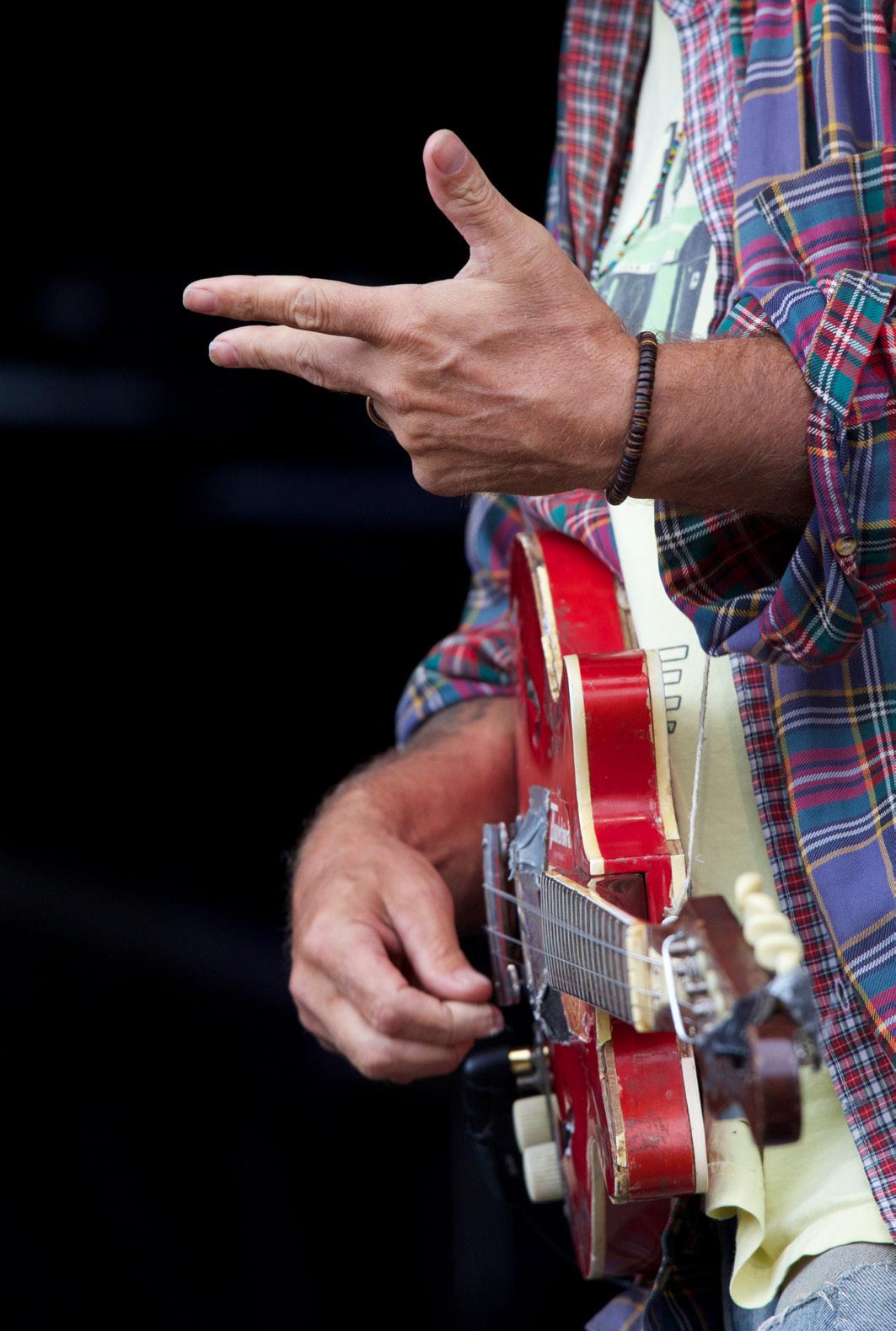
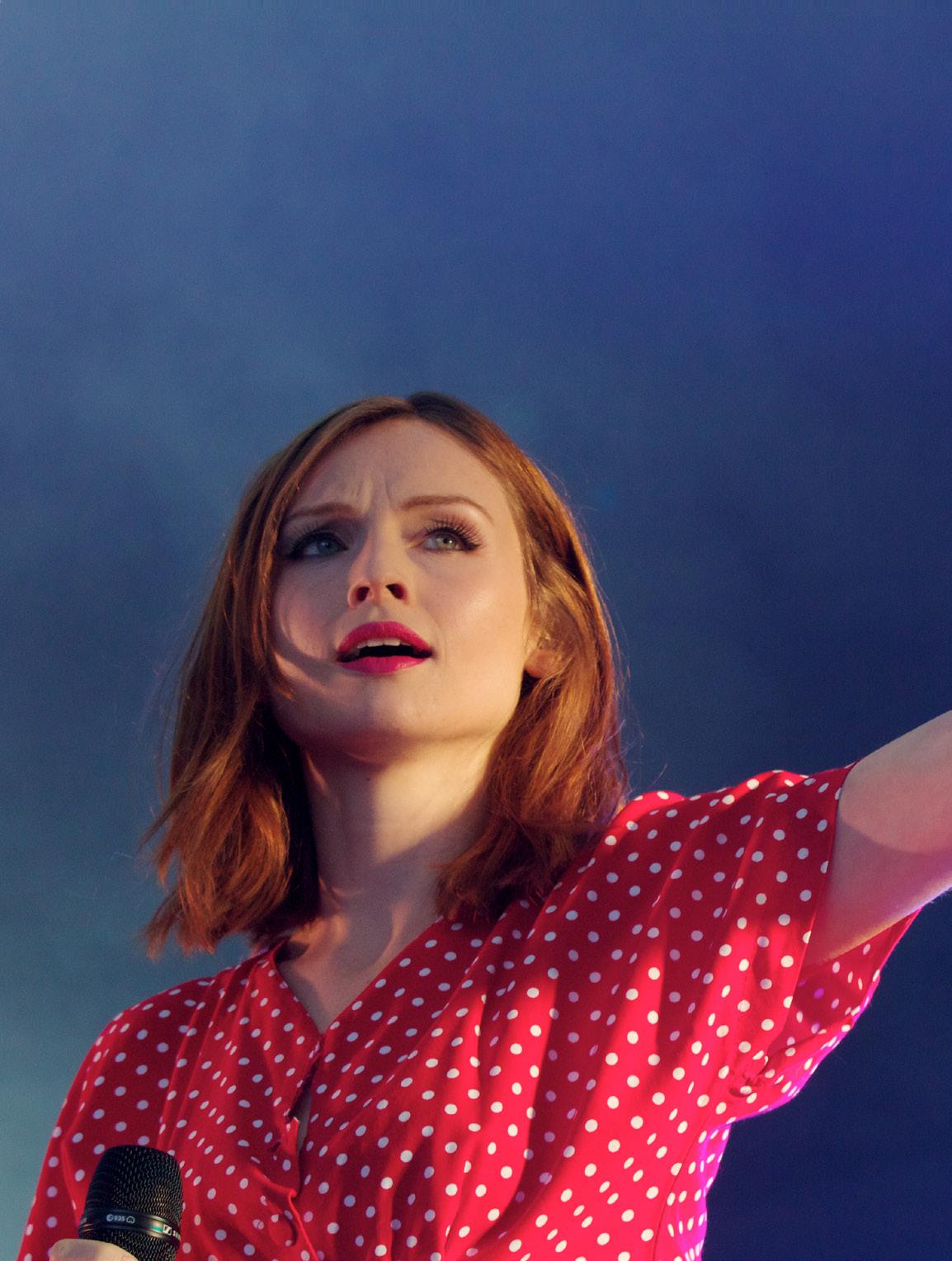
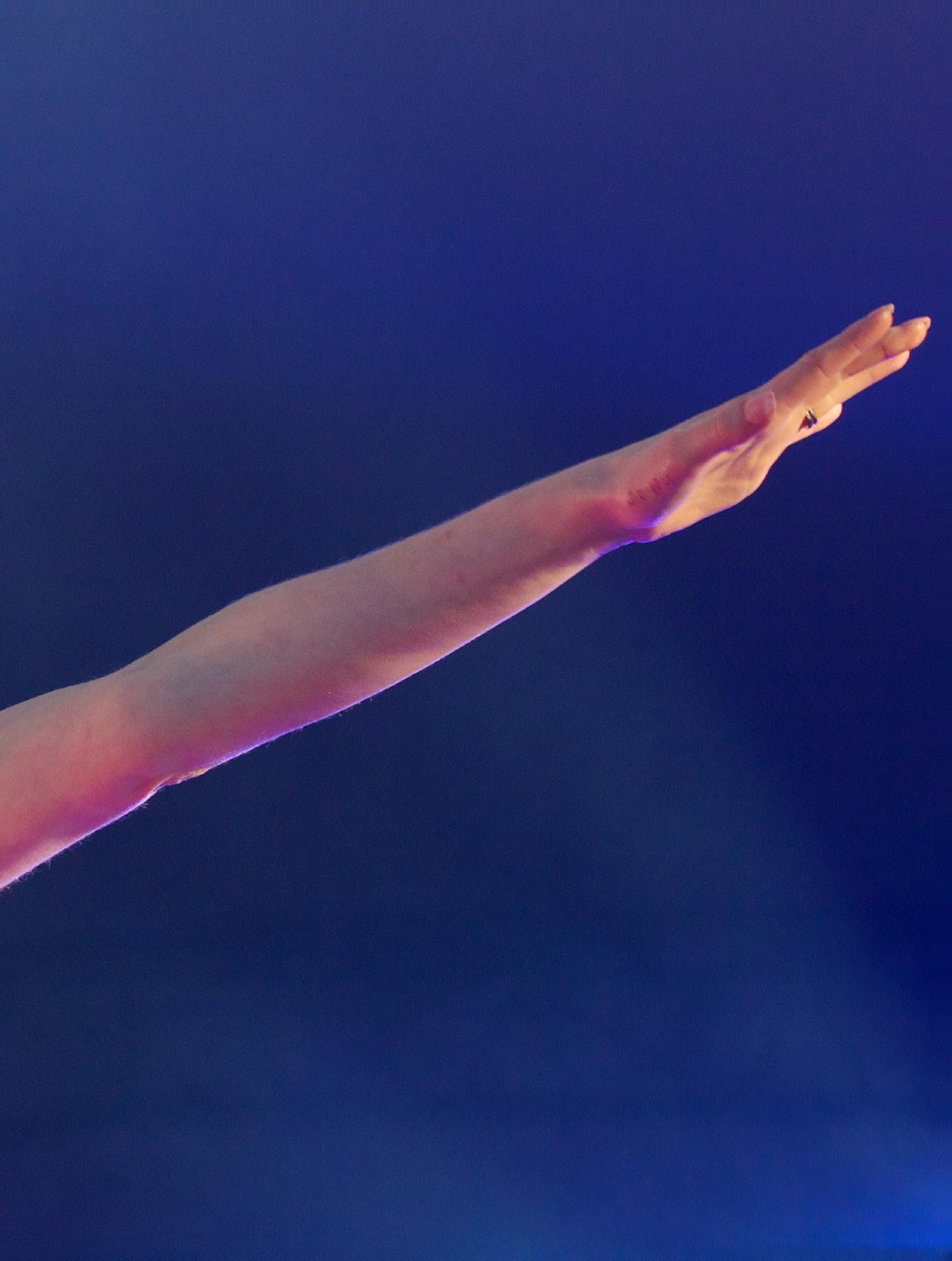
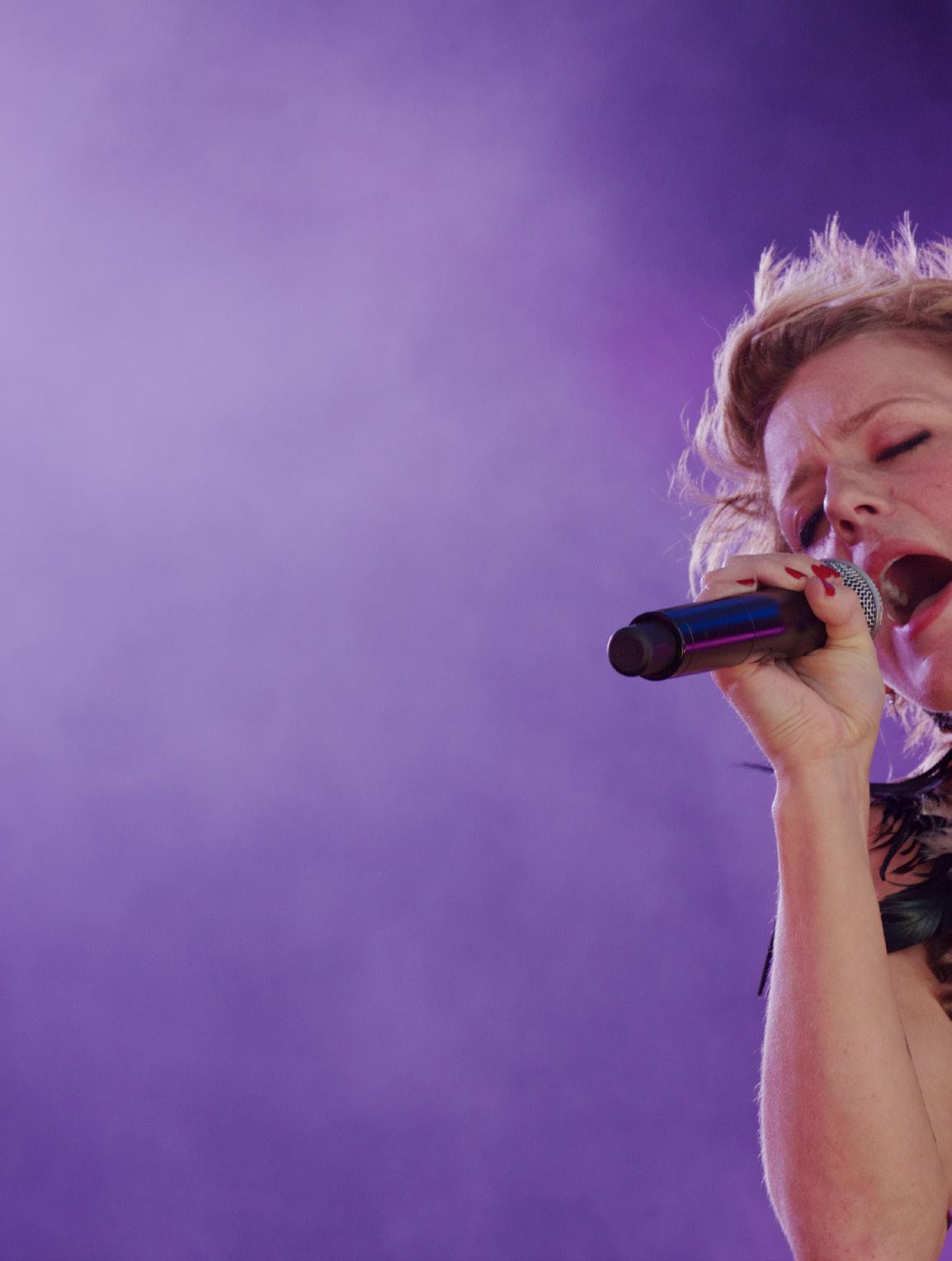
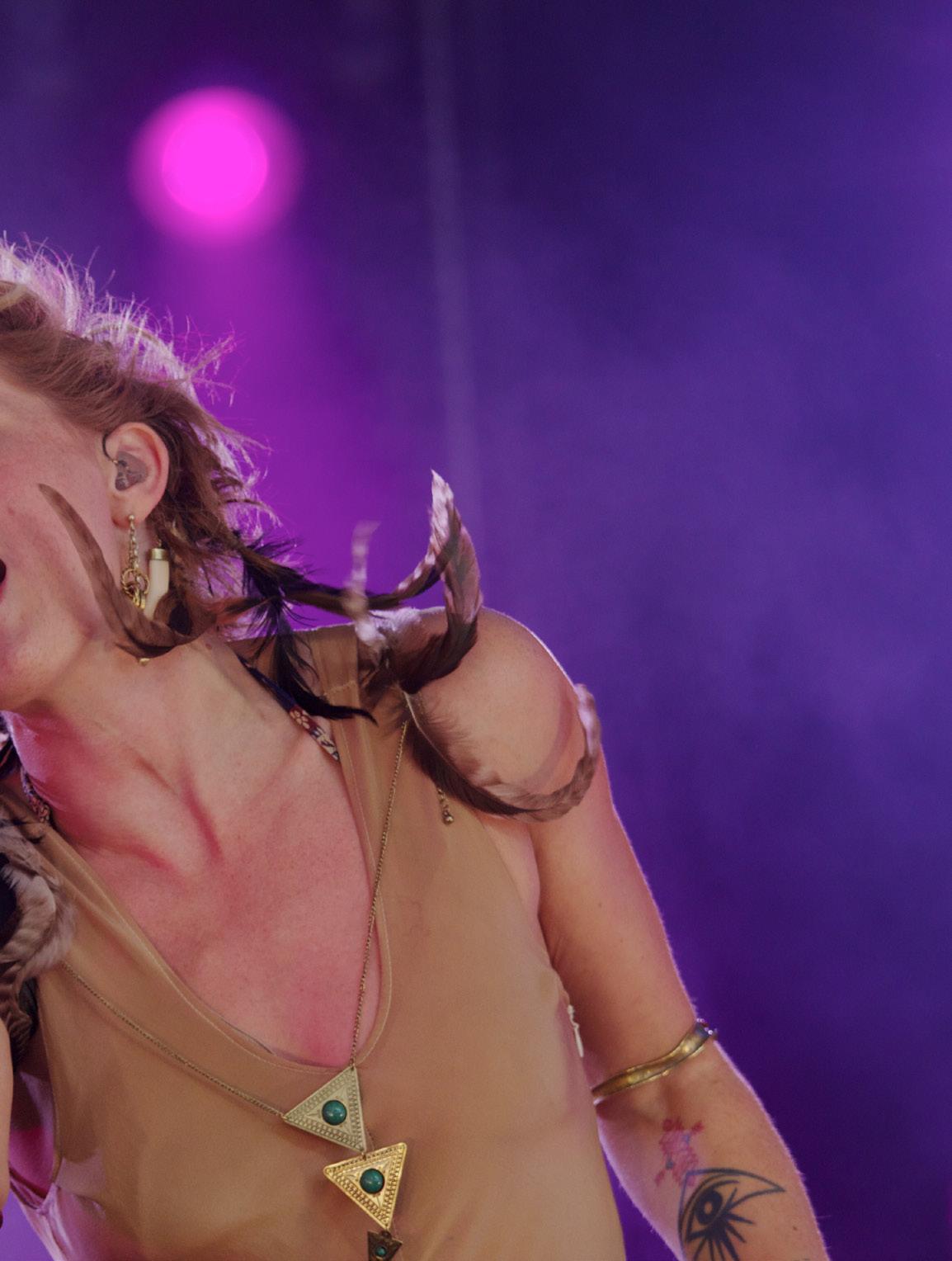
Part sociology, part photography and a whole lot more, by Gabrielle Motola
This review begins with a story; it’s the story of a soul-searching photographer who discovers more than she expected in the heartland of Iceland. Gabrielle Motola’s “An Equal Difference” stands apart through the transcending beauty of the imagery which it encapsulates, and the prose, which accompanies it.
It is a very honest read, and a journey of self-discovery, in which the reader is drawn in, reflecting on the themes, and seeking answers to the questions that are posed. It is insightful and appeals on many different levels - photographic, philosophical, sociological and cultural.
Opening with the quote: “we are blinded by our eyes, which gives us more illusion than sight”, this underlying mantra speaks volumes as Gabrielle tells the stories of the many different and forward thinking people she meets during her portrait sessions.
Gabrielle’s first impressions and initial encounters are challenged by her ingrained ideology and bias; these are lessons that we, as photographers, can reflect on and learn from. If we are prepared to be as honest. To recognize, adapt and not be influenced or glamorized by stereotype or expectation. This is the simplicity to be found in the beauty and the mastery of this story.
Gabrielle comes to appreciate her final image selection, which stands as the testament to the journey she unknowingly embarked on. Not only does she achieve something which challenges every photographer (namely, trying to critique his or her own work), she also unveils the illusion. Uncovering the uniqueness of her subjects, she portrays their inner qualities to reveal the essence of who they are, and the natural environment which has shaped their lives.
We are presented with a broad spectrum of imagery. Some of the portraits are taken mid-conversation which brings us closer to the subject, conveying a liveliness which adds perspective and context to their story. The natural environment and landscapes also play a very important role, as nature influences Icelandic character, which is an important aspect of the narrative.
A credit to Gabrielle for her courage, being as open about herself as she is with her photography. The journey is made possible by the extraordinary people that she introduces to us, each fuelled by a passion to uncover greater meaning. What we gain is an articulate and compassionate view of the very real social issues confronting the Icelandic people and a sense of what can be achieved if alternatives are embraced.
We are left as we began with a message: “If you really want to do something you’ll find a way. If you don’t you’ll find an excuse”. The reader is left to draw their own interpretation. I take this as a call to action. To be inspired to seek greater meaning, and avoid being daunted by challenges that confront us, no matter what shape they take, because there is more to be achieved if you go for it!
Review by Belinda Bamford


The book is available from the below websites in printed and e-book versions.
https://www.gabriellemotola.com/anequaldifference/ https://www.anequaldifference.com/
Looking for a new challenge? Would you like to take your Photography to a new level and get your work seen by a wider audience? Then join four of the RPS’s finest photographers on this two day workshop.
Four members of the Chichester-based Focus Group examine a number of ways that could change the way you approach and plan your photography, and share their experiences of how to get work seen by a wider audience.
Iain McGowan FRPS – Collections and Collages
Pete Bamforth ARPS – Why Print BIG?
John Bradshaw FRPS – Photographic Projects
Janey Devine FRPS – Story Telling with images
The workshop will be based at the recently renovated Middleport Pottery Works at Burslem (Stoke-on-Trent) where we have access to a fully equipped spacious lecture room. The weekend will comprise a mix of led discussions, and photographic excursions. The venue is next to the Trent and Mersey Canal, and close to a number of interesting locations, all full of photographic potential.
The cost of the workshop is £120 (£140 for non RPS members). This does not include costs for meals and accommodation which should be booked separately. We suggest the Premier Inn at Stoke-OnTrent (Hanley), Etruria Road, Hanley, ST1 5NH, but there are number of other hotels and bed and breakfast places nearby. There is an excellent coffee shop at Middleport Pottery for lunch and light refreshments during the day. Depending on the locations visited, there may also be entrance fees to any museums.
To find out more please visit: http://www.middleportpottery.org
http://www.focusgroupphotography.com
To book a place, please contact Mo Connelly at doc@rps.org
Strange and Familiar at the Manchester Art Gallery displays work by some of the most renowned documentary photographers from the twentieth century. It is a celebration of life in modern Britain as seen through the eyes of foreign photographers.
With over 250 images on display, contributions are from a wide range of leading names including Henri Cartier-Bresson, Bruce Davidson, Paul Strand, Bruce Gilden, Gary Winogrand and Evelyn Hofer. The exhibition is curated by Martin Parr and organised by the Barbican Centre.
Housed in a large open space on the first floor of the modern extension to the gallery, its location can be a little hard to find due to poor signage, but eventually you find the entrance to the rooms with the title of the exhibition and a sign saying: “photography not permitted”!
The exhibits are grouped by artist, with no real chronology, in a series of about six interlinked “rooms” which are designed to retain interest and surprise. For each photographer, there is a brief resumé and an explanation about why they came to be here.
The photographs range from the 1930s to the present day, and the bulk of the works stem from the post-war era until the late 1960s. This was, of course, a period of dramatic cultural change and the reason for why the exhibition is so compelling. Some of the most striking entries are Bruce Gilden’s huge and unflattering colour portraits taken in the West Midlands, but my favourites were Bruce Davidson’s affectionate and witty street observations and Raymond Depardon’s images of Glasgow.
Manchester Art Gallery
On show until 29 May 2017
Free for enter.
http://manchesterartgallery. org/exhibitions-and-events/ exhibition/strange-and-familiar/
Like a glimpse into a vanished civilisation, although not really that long ago, these pictures give a fascinating insight. The length and breadth of Britain is covered from Uist to Dover, and Glasgow to South Wales. Unfortunately, it does not include Manchester. The exhibition is delightful in every respect. The international standing of the photographers, the way their work is presented and, unlike other photographic exhibitions, the sheer volume of photographs on display. Showing until May 29, admission is free which is remarkable for such an outstanding attraction.
By John Patterson LRPS
Roger Mayne (1929-2014) was a significant documentary photographer working mainly in the 1950s and 1960s. His work, recording urban images and candid shots are regarded as a milestone in British photography. They provide a documentary record of Britain emerging from the years of austerity following the war, to the ‘hopeful’ early 1960s.
The opening sequence is from his highly acclaimed Southam Street series. Shot between 1956 and 1961, Mayne took around 1400 images before the area was demolished to make way for Erno Goldfinger’s Trellick Tower. Other images include pictures of Teds and gangs, the Rayleigh factory in Nottingham, and work from Leeds and Sheffield Park Hill estate. An audio-visual installation ‘British at Leisure’ is also restage for the first time since 1964.
His quote ’Streets have their own kind of beauty, a kind of decaying splendour’ is probably just as appropriate today for the modern street photographer.
Influenced by Hugo van Wadenoyan, these exhibited works are pure documentary, offering a ‘candid, detached vision’. He viewed abstraction as ‘empty’ and photojournalism as simply ‘bearing witness’, and aimed to take images that were about the human condition.
His first solo exhibition was in 1956, at the ICA. That year he also exhibited in the US, with work being acquired by MoMA and a front cover for The Observer. According to the New York Gitterman Gallery, Mayne ‘consciously printed with high contrast to emphasize the formal qualities of his work and increased scale to have a further dialogue with the painting of the time’. His vivid photographs appeared as covers for several Penguin and Pelican book, including Colin McInnes’ Absolute Beginners in 1959. Some examples of this work are exhibited.
As well as his images, there are extracts of correspondence Mayne had with various arts bodies to encourage the exhibition of ‘modern photography’ in major galleries. Something he battled with during the mid 1950s as an organiser with CS (Combined Societies), an alliance of regional camera clubs). Using forceful language to explain that the likes of Henri Cartier-Bresson, Robert Capa, Paul Strand, Edward Weston and minor White had all had major exhibitions before anything similar was staged in Britain.
For those interested in documentary photography this is a worthwhile visit. Much of the history of documentary photography is characterised by the works of Cartier-Bresson, Capa et al above. This work precedes those of Tony Ray-Jones and Don McCullin, and provides an understanding of a little of his British roots. Curated by Anna Douglas, who also curated the recent, acclaimed Shirley Baker: Women and Children, the exhibition has powerful images, plus insightful examples of other work and correspondence that help piece together an influential British documentarian.
The Photographers’ Gallery, London W1
On show until 11 June 2017
Free admission before 12.00 every day
http://thephotographersgallery .org.uk/roger-mayne-4
Four projects are shortlisted for this year’s Deutsche Börse. I am only going to review one, which I previously saw in Amsterdam last year at Huis Marseilles. Dana Lixenberg’s Imperial Courts is a complex community project, spanning over twenty-two years (1993-2015). It documents the Imperial Courts Housing Project in Watts, Los Angeles. Of the four shortlisted, this is the one that is most clearly ‘documentary’ in nature.
The genesis of the project was in 1992, on assignment from Vrij Nederland, a Dutch weekly magazine, to south Central Los Angeles, for a story of destruction and rebuilding after the Rodney King riots. Following an introduction to TB, the unofficial ‘godfather’ of the community, and ‘Crips’ gang leader she got his agreement to take pictures. Renting a 4x5 large format camera she set about making portraits. Working only with available light, and photographing outside, the project and exhibition is predominantly portrait based, but also includes urban landscapes. As the project progressed, in later years, Lixenberg used a compact digital camera to capture moments, as film scenes, and a soundtrack.
The project captures the inhabitants through three generations. There was initial reluctance to being photographed, but working with a large cumbersome camera and shooting Polaroids maybe helped, in Lixenberg’s view, to win some people over. By bringing the results of the previous days shoot and spending a lot of time ‘hanging out’ with people, she eventually gained their trust.
This is social documentary and portraiture on a grand scale. In terms of timescale, the commitment, the number of images and the scale of the images ( 4” by 5” blows up big!). This is probably one exhibition where the book cannot do it justice.
The Photographers’ Gallery, London W1 On show until 11 June 2017
Free admission before 12.00 every day
http://thephotographersgallery.org.uk/deutsche-b-rsephotography-foundation-prize-2017
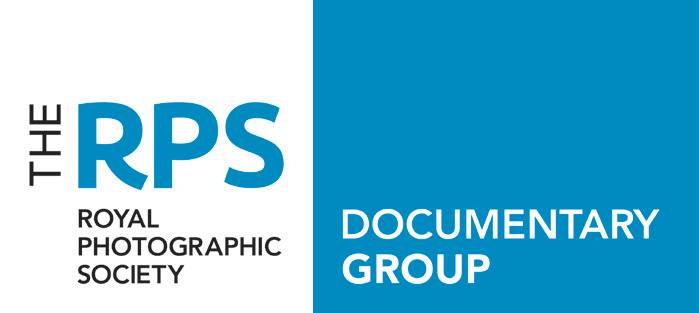
The Documentary Group focuses on photography which chronicles everyday life in the broadest possible way, as well as topical events and photography which preserves the present for the future, through both individual images and documentary ‘stories’. It is typically found in professional photojournalism, real life reportage, but importantly for us it is an amateur, artistic, or academic pursuit. The photographer attempts to produce truthful, objective, and usually candid photography of a particular subject, often of people.
Members form a dynamic and diverse group of photographers globally who share a common interest in documentary and street photography. We welcome photographers of all skill levels and offer members a diverse programme of workshops, photoshoots, longerterm projects, a prestigious annual Documentary Photographer of the Year (DPoTY) competition, exhibitions, and a quarterly online journal “Decisive Moment’. In addition to our AGM and members get-together we have an autumn prize-giving for the DPoTY incorporating a members social day.
Some longer-term collaborative projects are in the pipeline for the future. Additionally, we have an active Flickr group and Facebook page.
Overseas members pay £5 per annum for Group membership rather than the £15 paid by UK based members.
The Documentary Group is always keen to expand its activities and relies on ideas and volunteer input from its members.
If you’re not a member come and join us see: http://www.rps.org/special-interest-groups/ documentary/about/dvj-membership
Find us on the RPS website at: http://www.rps.org/special-interest-groups/documentary
Join our Forum at: http://www.rps.org/rpsforum?g=topics&f=50
On Flickr at: https://www.flickr.com/groups/2764974@N25/
On Facebook at: https://www.facebook.com/groups/RPSDVJ/

www.rps.org/special-interest-groups/documentary
Designed,
www.jhyturley.com
